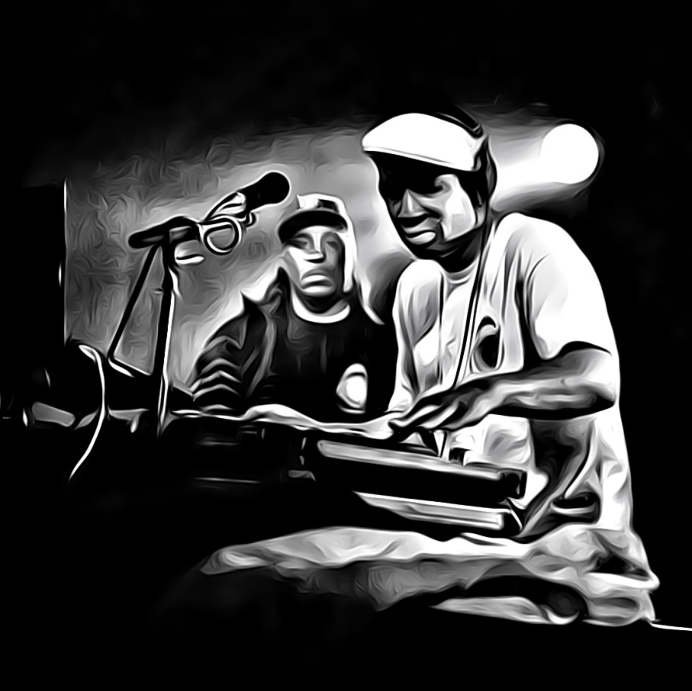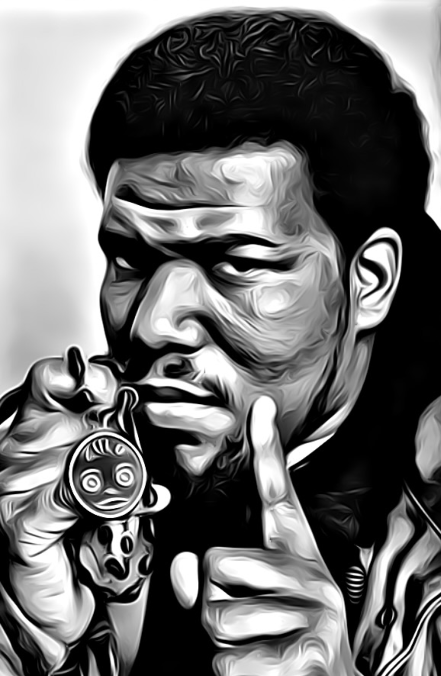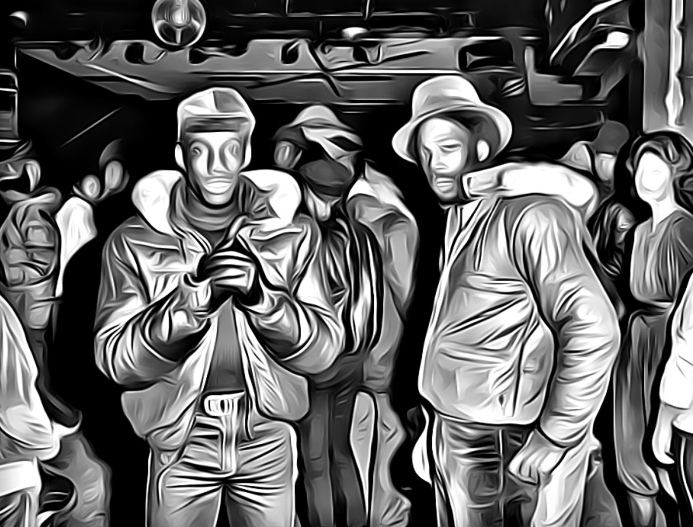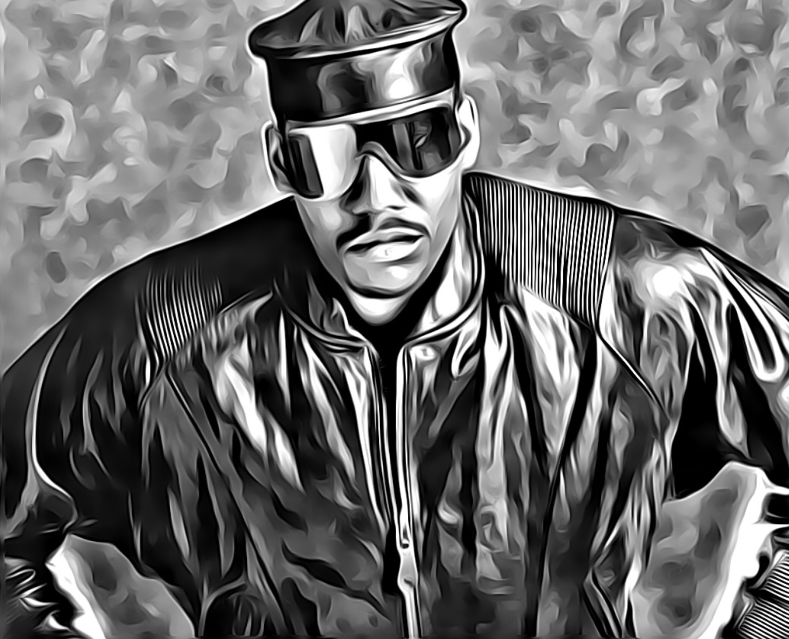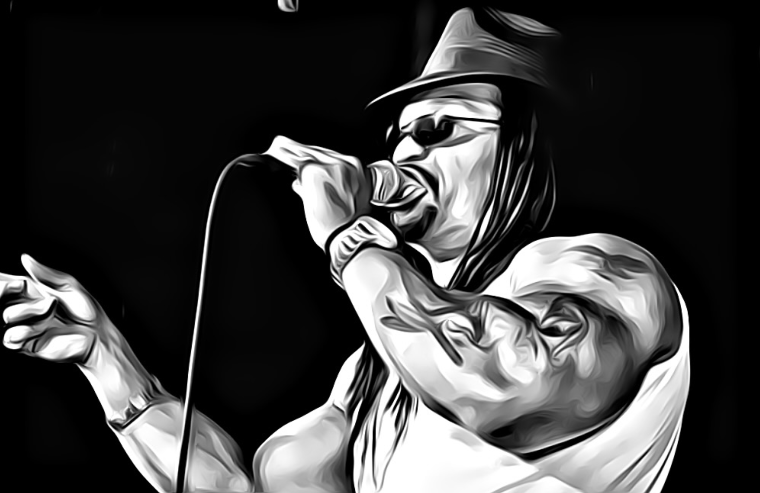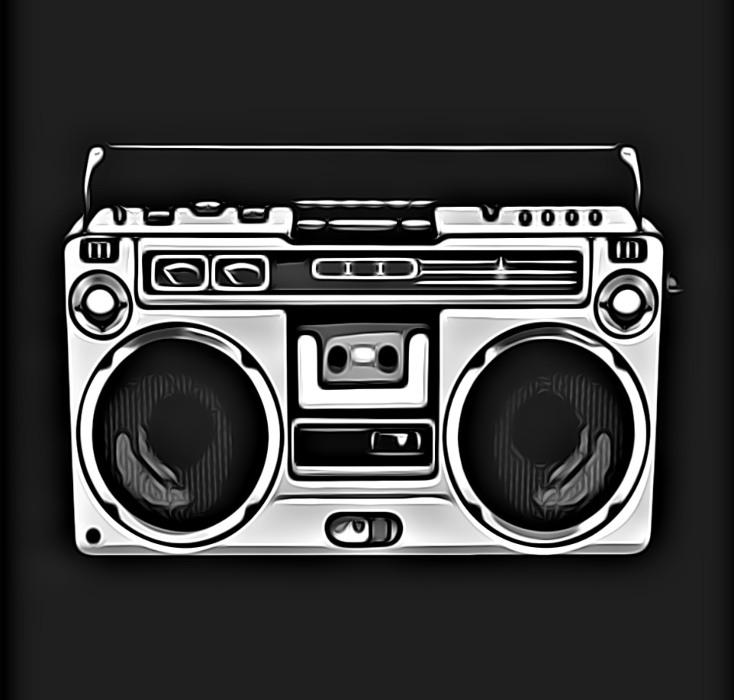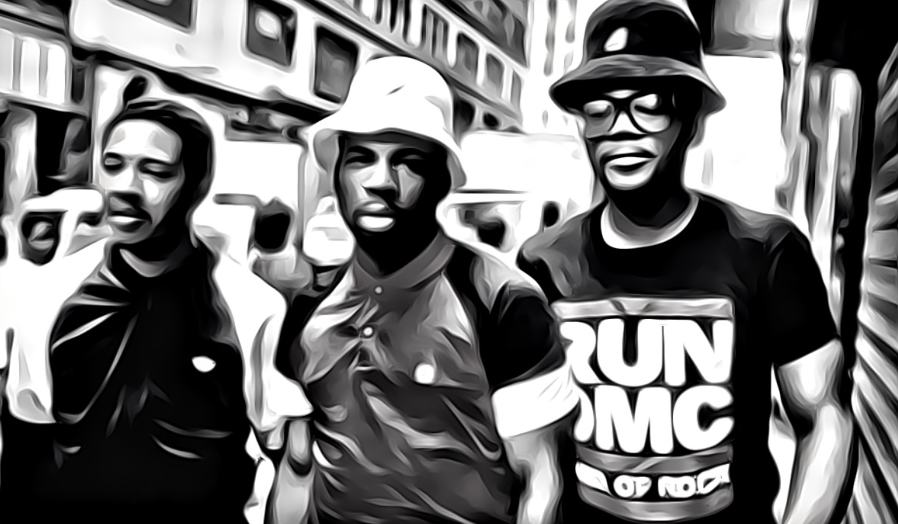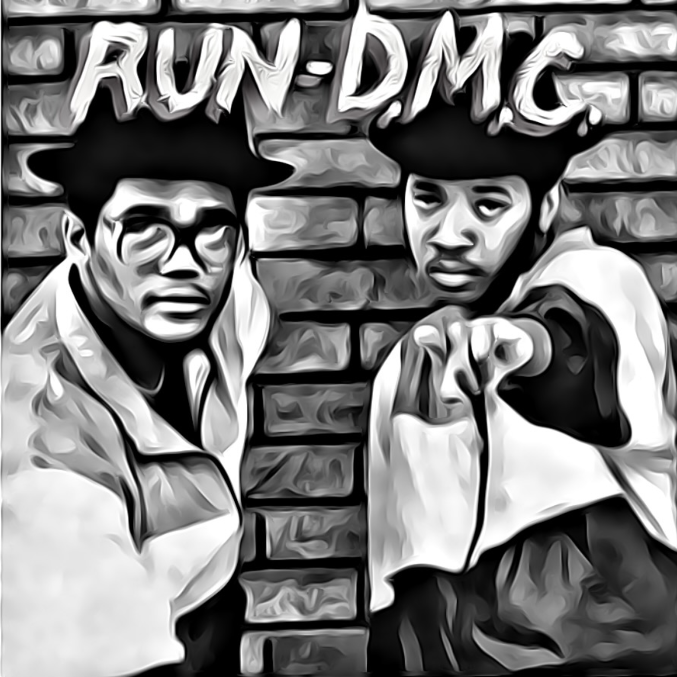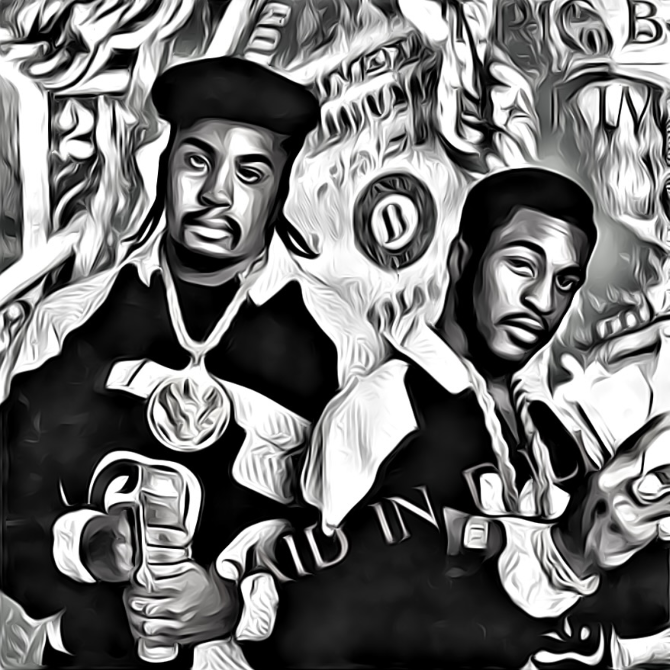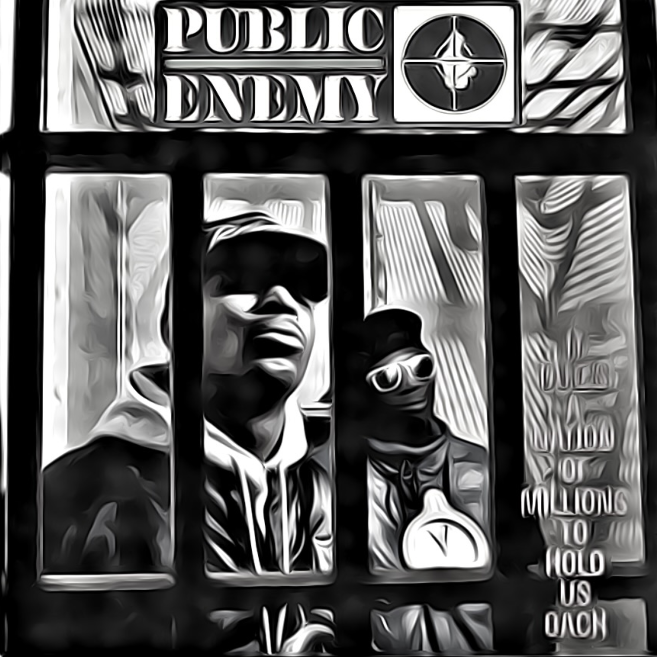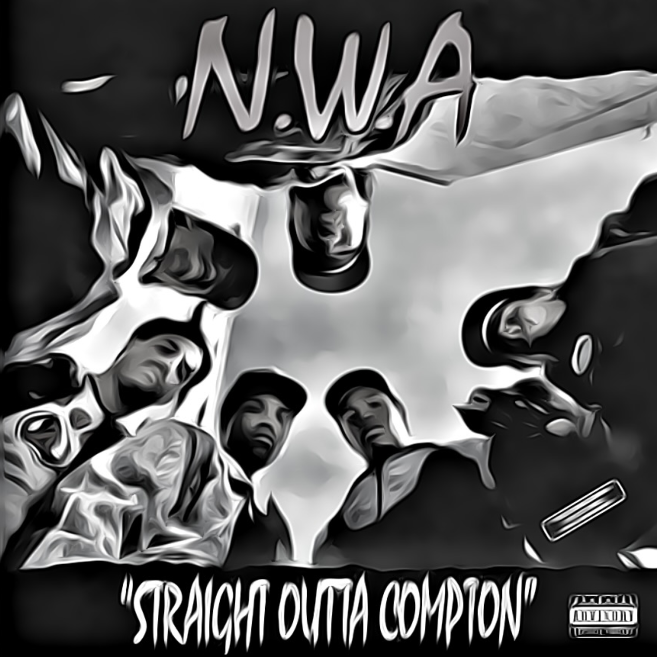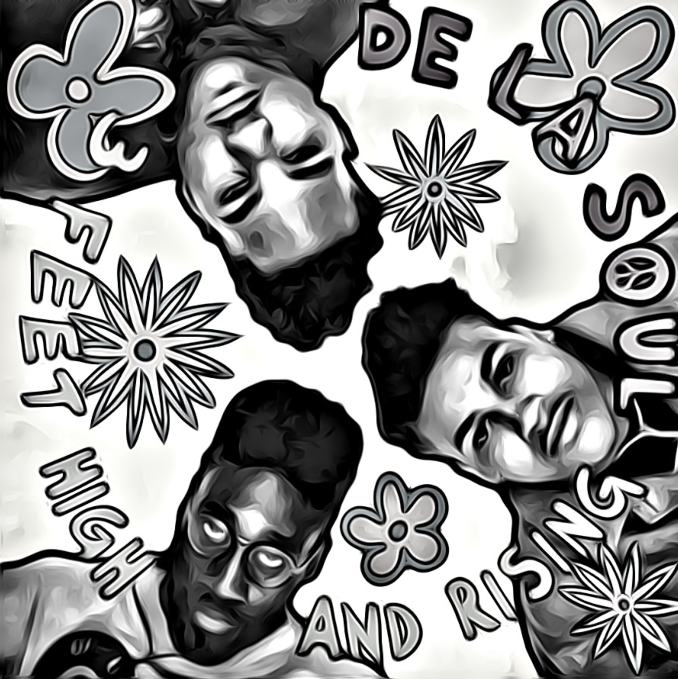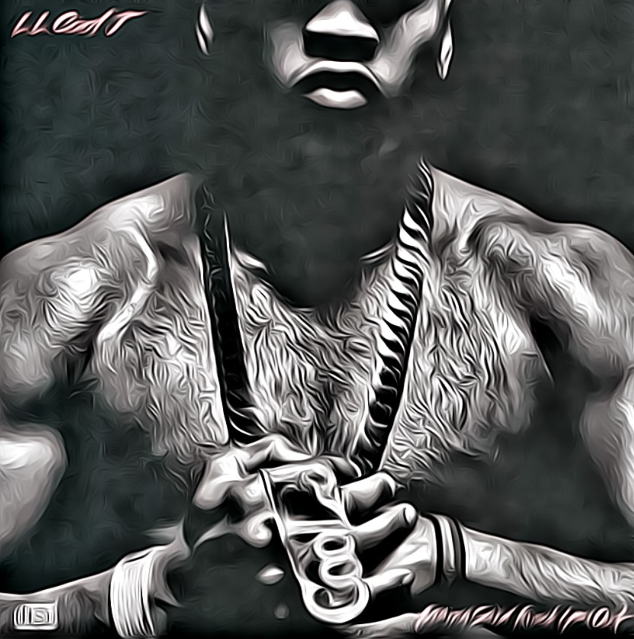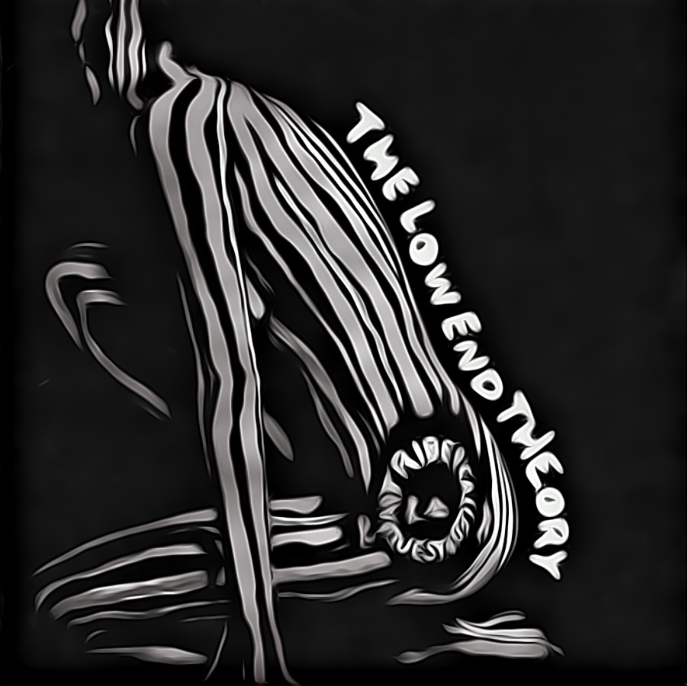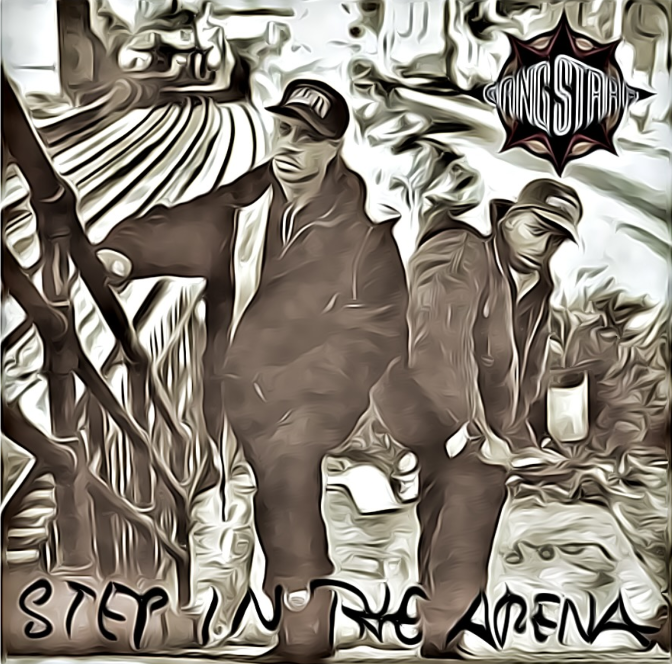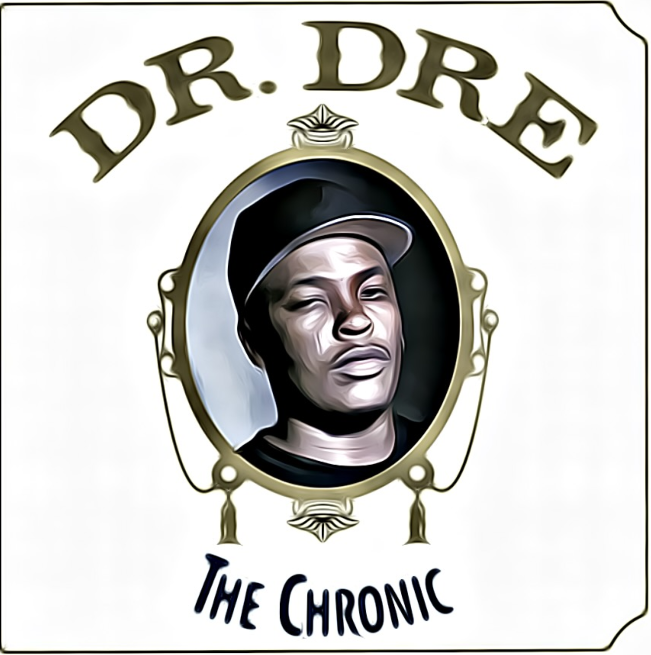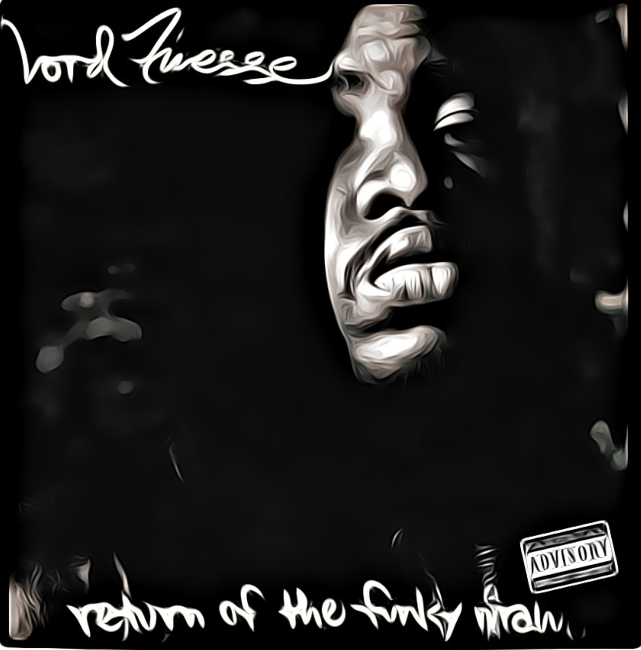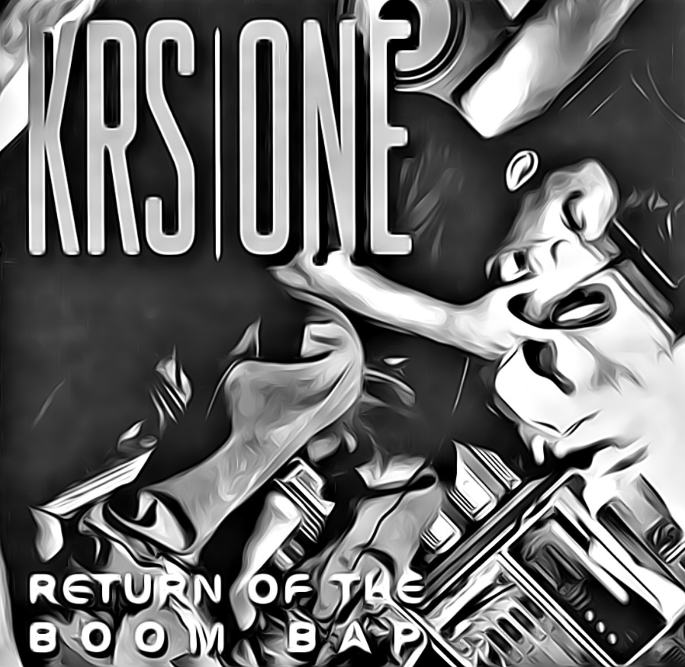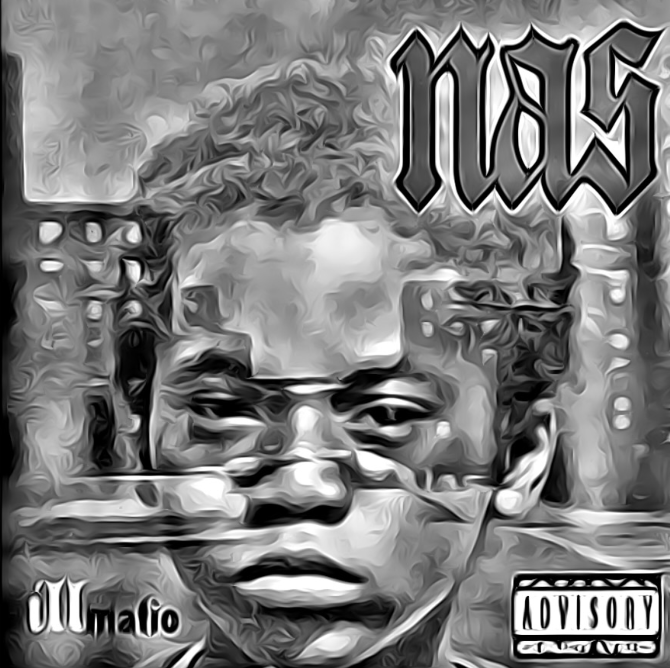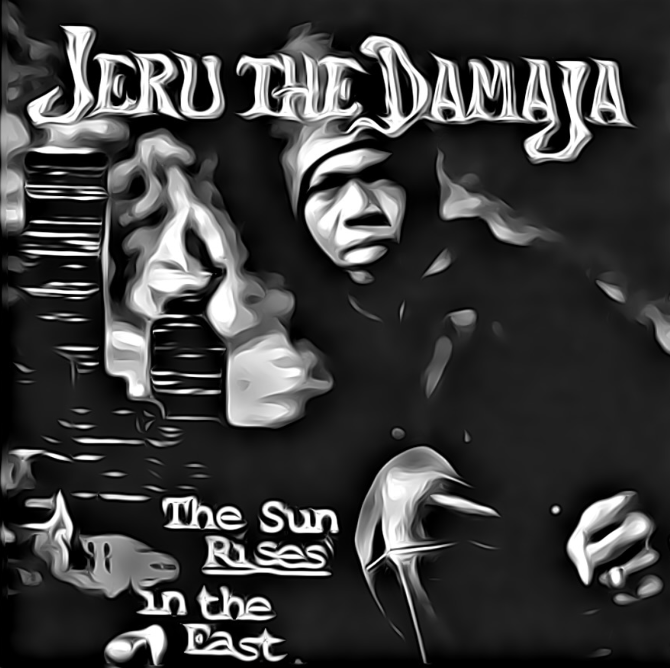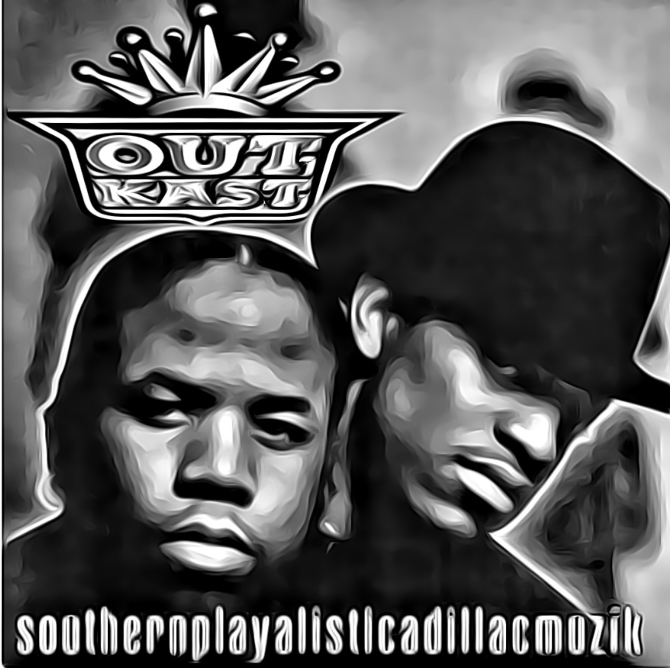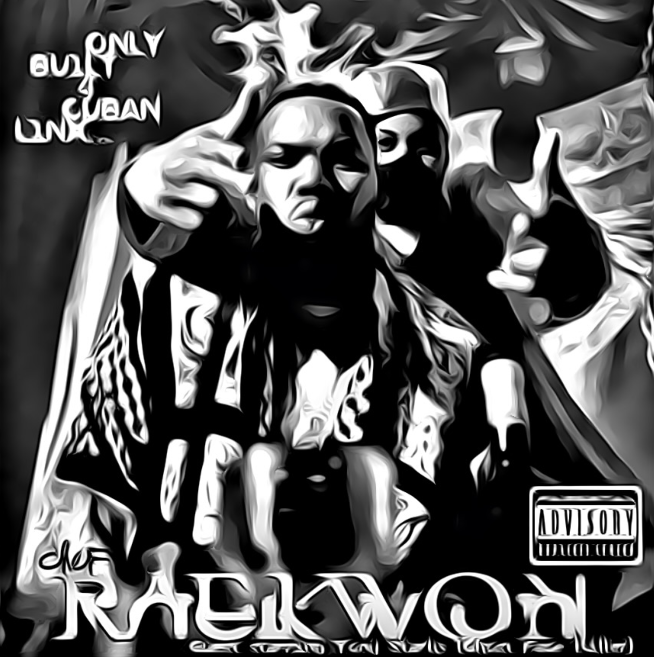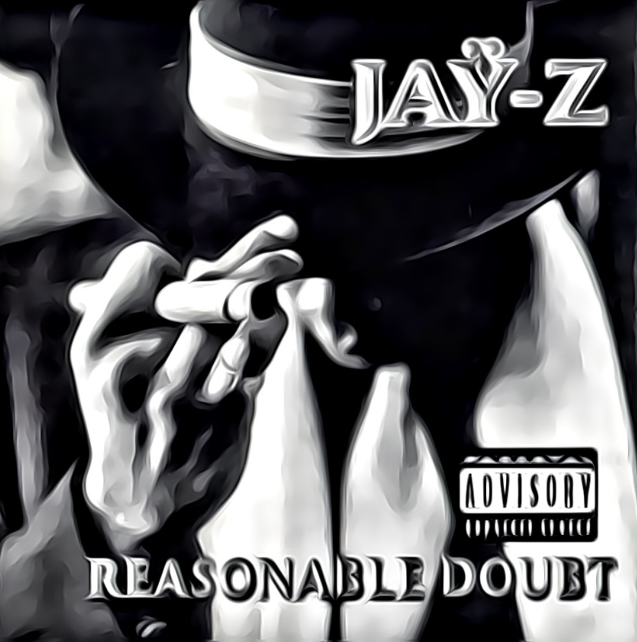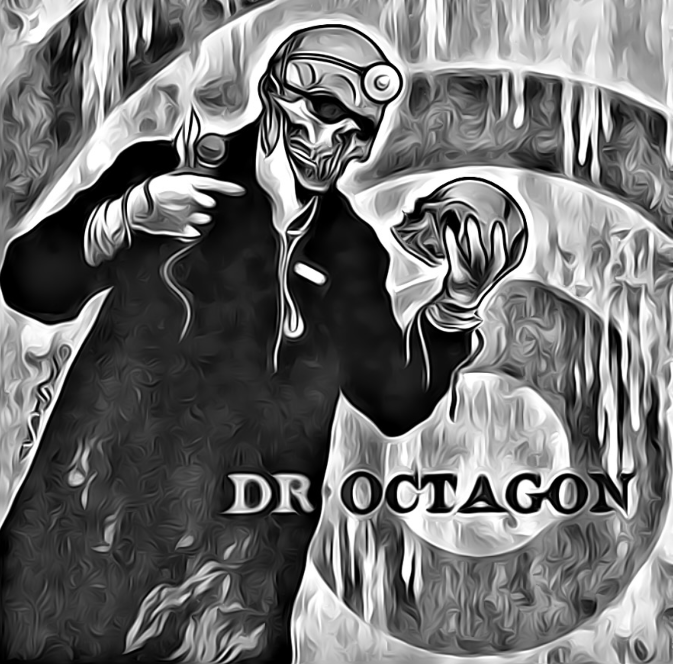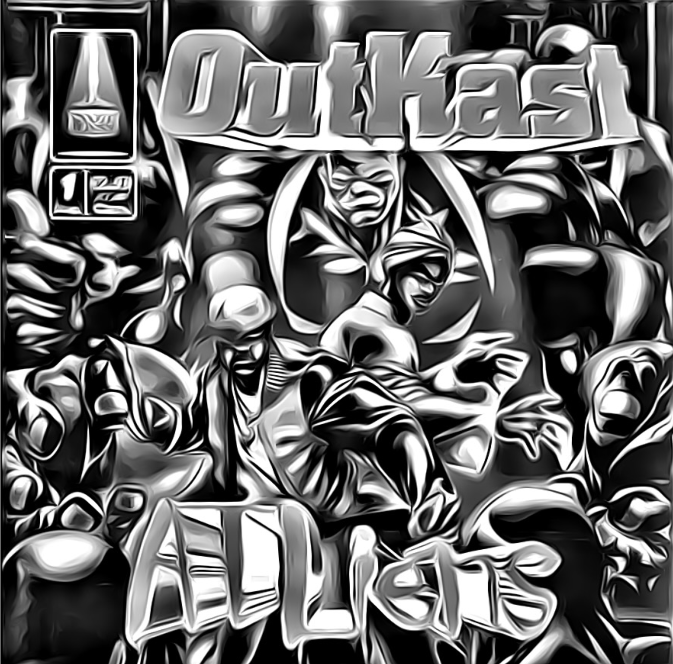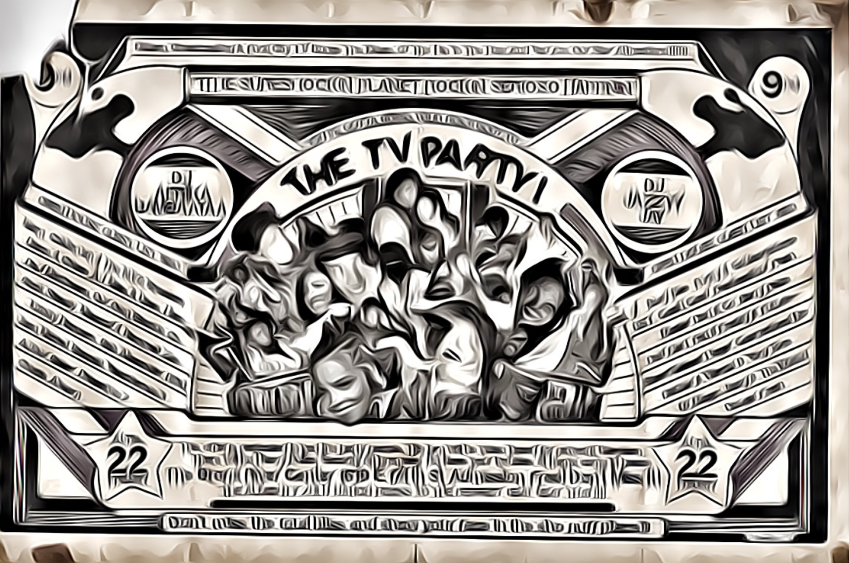Hip Hop has come a long way since its origins in the Bronx during the 1970s. It has evolved into a global phenomenon, influencing music, fashion, and popular culture around the world. However, there was a specific period in Hip Hop’s history that many consider to be its golden age. This era, which spanned from the mid-1980s to the mid-1990s, was a time of great creativity, innovation, and social consciousness in the genre. In this article, we will take a retrospective look at Hip Hop’s golden age, examining its origins, major players, most significant albums and songs, and lasting impact on the genre and beyond. We will also delve into some of the controversies and criticisms surrounding this influential era and discuss why it ultimately came to an end.
The golden age of Hip Hop is a period in the genre’s history that’s widely regarded as its most important and influential. It spans from the mid-1980s to the mid-1990s, a time when Hip Hop experienced explosive growth and creativity. The golden age was marked by the emergence of many new artists and sub-genres, including gangsta rap, conscious rap, and alternative Hip Hop. The period also saw the rise of iconic artists like Run-DMC, LL Cool J, Beastie Boys, Public Enemy, KRS-One, Eric B & Rakim, Ice-T, N.W.A., De La Soul, A Tribe Called Quest, Wu-Tang Clan, Nas, and many others.
The importance of the golden age lies in its enduring impact on Hip Hop and popular culture as a whole. During this period, Hip Hop became a dominant force in music and entertainment, crossing over to the mainstream and reaching new audiences all over the world. It also paved the way for many of the innovations and trends that continue to shape Hip Hop today, from the use of samples and production techniques to the emphasis on storytelling and social commentary.
In this article, we’ll explore the origins of Hip Hop, the cultural and social climate of the golden age, the major players and trends of the era, and the impact and legacy of this iconic period. We’ll also examine some of the criticisms and controversies that arose during this time and discuss why the golden age eventually came to an end. Ultimately, our goal is to provide a comprehensive retrospective of Hip Hop’s most influential decade and its lasting impact on the genre and popular culture.
Origins of Hip Hop
Hip Hop emerged as a broader cultural movement out of the South Bronx, New York City during the mid to late 1970s as a form of expression for African American and Latino youth living in economically deprived areas. The early roots of Hip Hop can be traced back to block parties, where DJs would play music to entertain the crowd. During these parties, DJs began experimenting with the turntables and mixing different records together to create new sounds.
One of the early pioneers of Hip Hop was Clive Campbell, better known as DJ Kool Herc, who is credited with creating the breakbeat. On August 11, 1973, Kool Herc, was just 18 years old when his younger sister Cindy decided to throw a party at their apartment building on Sedgwick Avenue in the Bronx. Cindy wanted to earn some money for back-to-school clothes, so she asked her brother to play music for the neighborhood. She promoted the event with flyers and even styled her brother’s clothes for the party.
At the party, Kool Herc played hard funk records like those of James Brown, but he began to isolate the instrumental portion of the record that emphasized the drum beat, also known as the ‘break’, and switch from one break to another, looping and extending them for longer periods to create a new sound that dancers could groove to. Using the same two-turntable set-up of disco DJs, he used two copies of the same record to elongate the break. This technique, sometimes called breakbeat DJing, using funky drum solos would become the foundation of Hip Hop music.
Kool Herc’s announcements and encouragement to dancers also helped to create the syncopated, rhythmically spoken accompaniment that would become known as rapping. He called the dancers “break-boys” and “break-girls,” or simply b-boys and b-girls. Kool Herc’s DJ style was quickly adopted by other Hip Hop pioneers like Afrika Bambaataa and Grandmaster Flash.
Grandmaster Flash – born in Barbados, but raised in The Bronx – was one of the most influential figures in early Hip Hop culture, a DJ who helped develop many of the techniques used in modern DJing. Flash invented the ‘cutting’ technique, which involved manipulating the turntable to create new sounds and rhythms. His ‘quick mix theory” catered to breakdancers and rappers by extending the drum breaks using duplicated vinyl copies. Grandmaster Flash refined this technique by playing the break on one record while simultaneously searching for the same section on another using his headphones. When the break ended on one turntable, he quickly switched to the other turntable where the same beat was already cued up and ready to play. By using the backspin technique (also known as beat juggling), he could loop the same short phrase of music indefinitely. This innovation also popularized the use of headphones for cueing tracks, which is now standard practice for DJs. Furthermore, Grandmaster Flash invented the slipmat, and he founded and created Grandmaster Flash and the Furious Five, the first rap group to be inducted into the Rock and Roll Hall of Fame in 2007.
Another influential DJ during this era was Grand Wizzard Theodore, who is credited with inventing the scratching technique. Theodore discovered the technique by accident while trying to cue up a record and ended up moving the record back and forth, creating a rhythmic sound that would become a hallmark of Hip Hop. During the early 1980s, Theodore was the leading member of Grandwizard Theodore & the Fantastic Five. Their song “Can I Get a Soul Clap” was released in 1982. Theodore’s contribution to Hip Hop culture was also showcased in the 1983 film Wild Style, in which he appeared and contributed to the movie’s soundtrack. Theodore also shared the origin story of scratching in the 2001 documentary film, Scratch.
Other influential figures in the early days of Hip Hop include Disco King Mario, whose contributions to pioneering Hip Hop are often looked over arguably due to his early death; Afrika Bambaataa, a former street gang leader who formed the Zulu Nation and used Hip Hop as a way to stop gang violence and promote peace and unity, Bambaataa’s music was heavily influenced by funk, soul, and electronic music, and he is credited with popularizing the use of drum machines and synthesizers in Hip Hop; DJ Hollywood, who was known for his flashy style and call-and-response rhymes; and MCs like Grandmaster Caz, Kool Moe Dee, and Melle Mel.
Grandmaster Caz came up in the mid-70s and later became the leading member of the legendary Cold Crush Brothers during the late 1970s and early 1980s, the crew that’s known for their infectious harmonizing. Caz may be best known for his involvement in the seminal 1979 single “Rapper’s Delight” by The Sugarhill Gang. Though uncredited at the time he is acknowledged now as the main writer of the lyrics of the late Big Bank Hank on the single, which sold around 5 million copies and introduced Hip Hop music to the mainstream all over the world. Big Bank Hank had been Caz’s manager and had asked him for lyrics to use in the song. Caz’s opening verse, using his alternate moniker “Casanova Fly,” was lifted by Big Bank Hank and became one of the most iconic lines of the song.
Kool Moe Dee started his career in the late 1970s as a member of the iconic Treacherous Three (with DJ Easy Lee, Kool Moe Dee, L.A. Sunshine, Special K, and Spoonie Gee, who left in the late 1970s). One of Kool Moe Dee’s early accomplishments was being part of the first major rap battle in history, where he lyrically attacked Busy Bee after one of his performances in 1981, revolutionizing the art of rhyming forever. After the Treacherous Three disbanded in 1985, Kool Moe Dee pursued a solo career and released his debut album, Kool Moe Dee in 1986. The album featured the hit single “Go See the Doctor” and established Kool Moe Dee as a successful solo artist. Kool Moe Dee’s powerful voice and aggressive style of rhyming inspired countless rappers that came after him.
Melle Mel (born Melvin Glover in The Bronx), played a pivotal role in the development of Hip Hop music. Melle Mel was known for his powerful voice and socially conscious lyrics, often rapping about issues such as poverty, drug addiction, and gang violence. He was one of the first rappers to address serious issues in his music, and his lyrics often reflected the struggles of life in the inner city. In 1982, Grandmaster Flash, Melle Mel, and the Furious Five released the single “The Message“, which is widely considered to be one of the greatest Hip Hop songs of all time. Melle Mel also played a key role in the development of rap as a live art form. He was one of the first rappers to incorporate crowd participation into his performances, encouraging the audience to join in on the chorus of his songs.
Despite its humble beginnings, Hip Hop quickly gained popularity, spreading throughout New York City and beyond. Its influence continued to grow, leading to the golden age of Hip Hop from the mid-1980s to the mid-1990s. During the golden age of Hip Hop, the genre became more diverse, with different subgenres emerging. Hip Hop has continued to evolve and expand in the decades since its inception, with new styles and subgenres emerging and gaining popularity. Today, Hip Hop is a global phenomenon and a dominant force in popular music and culture, with its influence extending far beyond its roots in the South Bronx – and the genre’s foundations were cemented in the golden age of Hip Hop.
The Golden Age of Hip Hop
The golden age of Hip-Hop is a period in the genre’s history that is roughly bounded by the years 1986 and 1996. This period is generally considered to be the peak of Hip Hop’s creative success, and it is bookended by the releases of landmark albums such as Run-DMC’s Raising Hell and Beastie Boys’ Licensed to Ill and the tragic deaths of two of the genre’s most iconic figures, Tupac Shakur and the Notorious B.I.G. During this time, Hip Hop underwent a period of tremendous growth and innovation, with artists experimenting with new sounds, styles, and approaches to lyrical content. The golden age was marked by a focus on social commentary and political activism, as well as the emergence of new sub-genres such as conscious rap, gangsta rap, and alternative Hip Hop.
The social and cultural climate during the golden age of Hip Hop was one of the most transformative periods in the history of the genre. The late 1980s and early 1990s were characterized by a complex and often volatile mix of social, cultural, and political developments, which had a profound impact on the world of Hip Hop and beyond. One of the most significant factors shaping the social climate of the era was the crack epidemic, which ravaged many urban communities across the United States. The drug trade was a major driver of crime and violence, and it had a profound impact on the lives of many young people growing up in inner-city neighborhoods. The rise of gang violence, particularly in cities like Los Angeles and New York, was also a major concern, and Hip Hop artists often reflected these harsh realities in their lyrics and music.
At the same time, the golden age of Hip Hop saw the emergence of Hip Hop as a global cultural force, with the music and fashion of the genre spreading far beyond its African American and Latino roots. This was a period of rapid globalization, as new technologies and communication networks allowed for unprecedented levels of cultural exchange and collaboration. Hip Hop was at the forefront of this movement, and artists from all over the world began to experiment with the genre, incorporating new sounds and styles from their own cultural traditions.
Throughout this time, Hip Hop remained a powerful vehicle for social and political commentary, with artists using their music to address issues such as poverty, police brutality, and racial inequality. Conscious rap emerged as a new sub-genre, focused on social issues and political activism, while gangsta rap offered a gritty, street-level perspective on life in the inner city. Overall, the social and cultural climate of the golden age of Hip Hop was complex and multifaceted, shaped by a range of social, cultural, and political factors. Yet despite these challenges, the music of the era remained vital, innovative, and hugely influential, paving the way for a new generation of artists and pushing the boundaries of what Hip Hop could achieve.
During the early 1980s, a five-year period of Hip Hop emerged after its origins in the 1970s, with the release of the first LPs. This period is often overlooked but was important in the development of the genre and instrumental in the coming of the golden age in 1986. Although often overlooked, artists such as Kurtis Blow, Whodini, Roxanne Shante, Fat Boys, Schoolly D, and Mantronix played an integral role in Hip Hop history and paved the way for the later influential artists and groups of the golden age that would really kick off around 1986.
However, it was Run-DMC’s self-titled debut album, released in 1984, that truly paved the way for the emergence of the golden age. Run-D.M.C. – the first rap album to earn a gold certification – was considered groundbreaking and revolutionary, showcasing a tougher and more aggressive form of Hip Hop that deviated from the popular light sound of the time. The album’s sparse beats and aggressive rhymes were a significant contrast to the traditional Hip Hop sound. Run-DMC, consisting of Joseph “Run” Simmons, Darryl “DMC” McDaniels, and Jason “Jam Master Jay” Mizell, became one of the most influential groups in Hip Hop history, and their self-titled debut album is now widely regarded as one of the most significant Hip Hop albums ever released, containing classic Run-DMC songs like “It’s Like That” and “Sucker MCs”.
In 1985, Run-D.M.C.was followed by Run-DMC’s sophomore album King Of Rock (platinum eventually), and LL Cool J’s Radio – the latter building on the sparse and hard beats of Run DMC’s debut album, under the guiding hand of Rick Rubin who would go on to play a crucial role in the emergence of the golden age, also by co-founding the trailblazing record label Def Jam Recordings (along with Russel Simmons, Joseph ‘Run’ Simmons’ brother). Like Run-D.M.C., Radio proved to be a significant milestone in the history of Hip Hop, playing an important role in shaping the sound of the genre. The sparse, stripped-down-sounding Radio was one of the first commercially successful Hip Hop albums and it helped to establish LL Cool J as a major force in the industry, with iconic cuts like “Rock the Bells” and “I Can’t Live Without My Radio”, showcasing LL Cool J’s charismatic b-boy attitude and delivery.
Among the most important albums released in 1986 were Run-DMC’s Raising Hell, Beastie Boys’ Licensed to Ill, Stetsasonic’s On Fire, Schoolly D’s self-titled debut album, Just Ice’s Back to the Old School, and Salt-N-Pepa’s Hot, Cool & Vicious. Raising Hell and Licensed to Ill in particular were massive commercial successes, each selling millions of copies and achieving mainstream recognition for Hip Hop. They also helped to establish Hip Hop as a dominant cultural force, reaching audiences around the world beyond its traditional urban base. 1986 was a year of experimentation, growth, and breakthroughs for Hip Hop. It set the stage for the true golden age of the genre, which would explode with several landmark albums in 1987 and 1988.
The year 1987 was a pivotal year for Hip Hop, with many important artists emerging and albums releasing. Eric B & Rakim’s debut album, Paid in Full, was a significant landmark, introducing complex lyricism and a new level of technical skill in emceeing to Hip Hop. Boogie Down Productions’s Criminal Minded was another important album, showcasing the gritty reality of urban life through its hard-hitting beats and socially conscious lyrics, and it marked the introduction to the Hip Hop world of KRS-One, one of the most important figures in Hip Hop ever. Public Enemy also made their mark with Yo! Bum Rush the Show, which featured the revolutionary production techniques and aggressive rhyming that would become a hallmark of their sound.
LL Cool J’s sophomore album Bigger and Deffer was another standout release, with its great blend of braggadocious rhymes and hard-hitting beats. Finally, Ice-T’s Rhyme Pays broke new ground by bringing gangsta rap to the forefront, with its unapologetic lyrics and streetwise attitude. These albums and artists (along with the likes of DJ Jazzy Jeff & The Fresh Prince, T La Rock, Steady B, Schoolly D, Dana Dane, MC Shan, Just-Ice, Heavy D, and Too Short) helped to shape the sound and direction of Hip Hop in 1987, setting the stage for even more innovation in the years to come.
The year 1988 is widely considered the most important year in Hip Hop music history. It was a year of tremendous creativity and innovation in the genre and saw the release of many classic albums that have had a lasting impact on the music industry. Public Enemy’s It Takes A Nation Of Millions To Hold Us Back was one of the most significant releases of 1988. The album’s combination of powerful lyrics, innovative production, and political messaging made it an instant classic. N.W.A’s Straight Outta Compton addressed issues such as police brutality, gang violence, and racial inequality, and was highly controversial at the time of its release due to its explicit lyrics and controversial content. The FBI even sent a letter to the group’s record label, warning them about the album’s content and potential to incite violence. Despite the controversy, Straight Outta Compton was a massive commercial success and helped to launch the careers of several of its members, including Dr. Dre, Ice Cube, and Eazy-E. The album has had a lasting impact on the genre.
Other notable releases that year included Ultramagnetic MCs’ Critical Beatdown, Slick Rick’s The Great Adventures Of…, Eric B & Rakim’s Follow the Leader, Big Daddy Kane’s Long Live the Kane, Boogie Down Productions’s By All Means Necessary, EPMD’s Strictly Business, Ice-T’s Power, Jungle Brothers’ Straight Out The Jungle, MC Lyte’s Lyte As a Rock, Eazy E’s Eazy Duz It, Biz Markie’s Goin’ Off, Too Short’s Life Is…, Run DMC’s Tougher Than Leather, and DJ Jazzy Jeff & The Fresh Prince’s He’s The DJ, I’m The Rapper. These albums were instrumental in shaping the sound of Hip Hop in the late 1980s and beyond and helped to establish many of the most important artists in the genre’s history.
1989 was another significant year in Hip Hop, with several important albums being released. One of the most monumental ones was De La Soul’s 3 Feet High & Rising, which was an instant classic. The album was innovative in its use of sampling, and its blend of different styles and influences helped to expand the boundaries of Hip Hop, tackling themes of positivity, individuality, and spirituality, making it an important cultural touchstone for the genre. Another important album from 1989 was the Beastie Boys’ Paul’s Boutique. Although it was not initially well-received, the album has since been recognized as a landmark in music, with its dense layers of sampling and intricate production setting a new standard.
Other notable releases from 1989 included The D.O.C.’s No One Can Do It Better, Kool G Rap & DJ Polo’s Road to the Riches, Big Daddy Kane’s It’s a Big Daddy Thing, EPMD’s Unfinished Business, Boogie Down Productions’ Ghetto Music: The Blueprint of Hip Hop, Ice-T’s The Iceberg/Freedom of Speech… Just Watch What You Say!, Jungle Brothers’ Done by the Forces Of Nature, LL Cool J’s Walking with a Panther, 3rd Bass’ The Cactus Album, MC Lyte’s Eyes On This, Nice & Smooth’s Nice & Smooth, Queen Latifah’s All Hail The Queen, and Biz Markie’s The Biz Never Sleeps. The year 1989 was another pivotal one in Hip Hop history, with a diverse array of artists and albums pushing the boundaries of the genre and setting the stage for its continued evolution in the years to come.
The year 1990 saw more growth for Hip Hop as a genre, with a diverse range of releases from conscious and political rappers such as Public Enemy, Ice Cube, Paris, X-Clan, and Boogie Down Productions, to pop-rap acts like MC Hammer and Candyman. Significant albums included Public Enemy’s Fear of a Black Planet, Ice Cube’s AmeriKKKa’s Most Wanted, Boogie Down Productions’ Edutainment, A Tribe Called Quest’s People’s Instinctive Travels And The Paths Of Rhythm, and LL Cool J’s Mama Said Knock You Out.
Fear of a Black Planet is widely regarded as one of Public Enemy’s seminal works. The album continued the group’s politically charged and socially conscious approach, addressing racism, inequality, and media manipulation. It featured iconic tracks such as “Fight the Power”, “911 Is a Joke”, and “Welcome to the Terrordome.” Fear of a Black Planet showcased Public Enemy’s powerful and innovative sound, combining dense production, intense lyricism, and Chuck D’s commanding delivery, solidifying their position as one of the most influential and provocative groups in Hip Hop history.
AmeriKKKa’s Most Wanted marked Ice Cube’s debut solo album after departing from N.W.A. The album’s production was primarily handled by Public Enemy’s Bomb Squad, bringing a dense and aggressive sound. Ice Cube’s incisive and confrontational lyricism tackled issues of race, police brutality, and social injustice. Edutainment by Boogie Down Productions (BDP) sought to educate and entertain listeners. The album explored various socio-political topics, including racism, history, and self-empowerment. KRS-One, BDP’s frontman, delivered thought-provoking lyrics and imparted knowledge with tracks like “Love’s Gonna Get’cha (Material Love)” and “Blackman in Effect”. Edutainment blended powerful messages with catchy beats, establishing KRS-One as perhaps the most important pioneer of conscious Hip Hop.
People’s Instinctive Travels And The Paths Of Rhythm marked the debut album of A Tribe Called Quest. The album showcased the group’s unique and eclectic style, blending jazz samples, smooth production, and intelligent lyricism. Hits like “Can I Kick It?” and “Bonita Applebum” displayed their playful and laid-back approach, while tracks like “I Left My Wallet in El Segundo” and “Push It Along” highlighted their skillful storytelling and introspection. Released in September 1990, Mama Said Knock You Out revitalized LL Cool J’s career and solidified his status as one of the genre’s top-tier artists. The Marley Marl-produced album featured a harder-edged sound, with LL Cool J delivering aggressive and assertive lyrics. The title track “Mama Said Knock You Out” became an instant classic, while tracks like “Around the Way Girl” and “The Boomin’ System” showcased LL Cool J’s versatility and charisma.
Other memorable albums released in 1990 include Eric B & Rakim’s Let The Rhythm Hit Em, Lord Finesse’s Funky Technician, Brand Nubian, One for All, Kool G Rap’s Wanted Dead Or Alive, EPMD’s Business As Usual, Master Ace’s Take A Look Around, and Poor Righteous Teachers’ Holy Intellect. The West Coast also really began to make its mark on the genre, with notable releases besides Ice Cube’s solo debut from Above The Law (Livin’ Like Hustlers), Digital Underground (Sex Packets), Paris (The Devil Made Me Do It), and Too Short (Short Dog’s In The House).
By now, Hip Hop’s Golden Age was in full swing, evidenced by the significant milestones and remarkable releases that left an indelible mark on the culture in the transformative year of 1991.
1991 witnessed the continuing rise of gangsta rap. N.W.A released the controversial N****z4Life album, which became the first gangsta rap album to top the Billboard 200 chart. Not the best album of the year, and not on par with N.W.A’s Straight Outta Compton (mainly because N****z4Life lacked the sharp wit of Ice Cube, relying more on shock value), but a landmark album nonetheless, if only because of Dr. Dre’s stellar production. Following his departure from N.W.A, Ice Cube released his second solo album, Death Certificate in the same year as N****z4Life. Death Certificate tackled issues of racism, police brutality, and political unrest, featuring powerful tracks like “Steady Mobbin'” and “True to the Game.” Ice Cube’s uncompromising lyricism and unfiltered social commentary resonated with audiences, establishing him as one of the most influential solo artists of the era.
Arguably the best album of the year was A Tribe Called Quest’s, sophomore album The Low End Theory. This influential project showcased their ability to blend jazz samples with introspective and socially conscious lyrics. Tracks like “Scenario” and “Check the Rhime” became instant classics, solidifying A Tribe Called Quest’s position as one of the most innovative and influential groups of the era. Fellow Native Tongues group De La Soul released their critically acclaimed sophomore album De La Soul Is Dead in 1991. The project showcased their witty lyricism, eclectic sampling, and clever wordplay, providing a satirical commentary on the state of Hip Hop culture in the early ’90s and enhancing the album’s themes of disillusionment and critique of the commercialization of Hip Hop, while also adding humor and storytelling to the album’s structure.
Public Enemy, renowned for their politically charged messages and revolutionary sound, released their fourth studio album, Apocalypse 91… The Enemy Strikes Black while Step in the Arena marked Gang Starr’s second studio album, the album that established the duo as a major force in Hip Hop, with its impeccable chemistry and innovative production. Consisting of rapper Guru and DJ/producer DJ Premier, Gang Starr’s album brought a unique blend of jazz-infused boom-bap beats and Guru’s unforgettable voice and his thought-provoking lyricism. Songs like “Just to Get a Rep” and the title track “Step in the Arena” exemplified Gang Starr’s signature sound.
Breaking Atoms, the debut album from the Large Professor-led group Main Source, was released in July 1991. With tracks like “Looking at the Front Door” and “Live at the Barbeque,” which introduced the world to a young Nas, Breaking Atoms remains a classic to this day. Ice-T’s OG Original Gangster and Black Sheep’s A Wolf in Sheep’s Clothing added further depth and diversity to the Hip Hop landscape in 1991. Both albums were long, but perfectly put together, blending wit and social commentary with bluntness and fun – both albums were among the best of the year and remain the artists’ career-best works.
Other notable releases include Cypress Hill’s, self-titled debut album (with hits like “How I Could Just Kill a Man” and “Hand on the Pump”); Geto Boys, third studio album, We Can’t Be Stopped, which featured one of the best Hip Hop songs ever with “Mind Playing Tricks on Me”; Naughty By Nature’s self-titled mega-hit debut album (under the NBN name that is); 2Pac’s 2Pacolyps Now debut album; Leaders Of The New School’s A Future Without A Past; Pharoahe Monch and Prince Po’s self-titled debut album Organized Konfusion; Geto Boys rapper Scarface’s solo debut Mr. Scarface Is Back; DJ Quik’s Quik Is The Name; Del The Funky Homosapien’s I Wish My Brother George Was Here; and albums from acts like Ed OG & Da Bulldoggs, Freestyle Fellowship, Compton’s Most Wanted, Chubb Rock, Godfather Don, WC And The MAAD Circle, KMD, UMC’s, 3rd Bass, and Digital Underground.
The year 1991 was a watershed year in Hip Hop, marking a further widening of the genre’s landscape. From the continued emergence of gangsta rap to the evolution of jazz rap and alternative approaches to the art form, 1991 showcased the diversity and creativity within Hip Hop during its Golden Age. These pivotal releases from influential artists such as N.W.A, A Tribe Called Quest, De La Soul, Public Enemy, Ice Cube, Gang Starr, Cypress Hill, and The Geto Boys not only shaped the sound of the era but also saw the establishment of Hip Hop as a commercial force, with several albums achieving mainstream success and chart dominance. This further solidified the genre’s influence and expanded its reach to wider audiences.
Overall, the year 1991 remains a crucial chapter in the narrative of Hip Hop’s Golden Age. The releases and achievements of this year exemplified the genre’s ability to capture the zeitgeist, challenge societal norms, and push artistic boundaries.
In 1992, the trajectory of Hip Hop’s Golden Age continued with a dynamic blend of innovation, artistry, and cultural influence. As the genre matured, it further solidified its place as a global cultural force, embracing diverse styles and narratives that pushed artistic boundaries and addressed pressing societal issues. From the emergence of groundbreaking albums to the rise of influential artists, 1992 stands as a pivotal year in Hip Hop history.
The year witnessed a remarkable expansion of Hip Hop’s sonic palette, as artists ventured into uncharted territories while remaining deeply rooted in the genre’s ethos. One of the most significant releases was Dr. Dre’s The Chronic, a seminal album that redefined West Coast Hip Hop, cementing Dr. Dre’s role as a producer extraordinaire and shaping the direction of the genre for years to come. With its G-funk sound and iconic tracks like “Nuthin’ but a ‘G’ Thang” and “Let Me Ride”, The Chronic became a commercial and critical success, catapulting Dre and his protégé Snoop Doggy Dogg to superstardom. The Chronic‘s impact extended beyond music, shaping West Coast culture and introducing a new wave of artists and producers.
Pete Rock & CL Smooth’s Mecca and the Soul Brother was another notable release in 1992. This album highlighted the duo’s dynamic chemistry, intricate lyricism, and innovative sampling techniques. Tracks like “They Reminisce Over You (T.R.O.Y.)” showcased the group’s ability to blend soulful melodies with thought-provoking rhymes, solidifying their place in Hip Hop history.
In 1992, the legacy of politically charged and conscious Hip Hop remained robust. Arrested Development’s 3 Years, 5 Months & 2 Days in the Life Of… fused soulful melodies with thought-provoking lyrics, tackling themes of unity, social justice, and self-empowerment. The album’s hit single “Tennessee” became an anthem of introspection and resilience. Paris’ Sleeping With The Enemy was a politically charged album that tackled racial and social issues head-on. The album’s confrontational lyrics and intense delivery contributed to its status as a provocative work. Meanwhile, Common Sense (later known as Common) debuted with “Can I Borrow a Dollar?” showcasing his signature flow and insightful commentary, foreshadowing his future role as a conscious rap luminary.
Boogie Down Productions’ Sex And Violence addressed societal issues while maintaining their signature sound. The album’s mix of conscious lyrics and varied production reflected KRS-One’s dedication to Hip Hop education. Beastie Boys’ Check Your Head marked their transition to a more eclectic sound, blending Hip Hop with punk and funk elements. The album’s genre-blurring approach showcased their musical versatility. Kool G Rap & DJ Polo’s Live And Let Die maintained their reputation for intricate storytelling and vivid imagery. The album’s cinematic narratives and skillful lyricism solidified Kool G Rap’s influence on future lyricists.
A lot of strong albums from NYC-based artists dropped in 1992. Gang Starr’s Daily Operation continued their streak of high-quality releases, combining Guru’s insightful rhymes with DJ Premier’s unmatched production skills. The album’s jazzy samples and socially conscious lyrics exemplified Hip Hop’s intellectual side. Eric B & Rakim’s fourth and last album Don’t Sweat The Technique demonstrated their evolution, with Rakim’s intricate flow remaining a hallmark. The album’s polished production and Rakim’s lyrical prowess solidified their legendary status. EPMD’s Business, Never Personal maintained the duo’s reputation for slick rhymes and sample-driven production. The album’s laid-back vibes and cohesive style solidified EPMD’s position as Hip Hop veterans. Redman’s Whut? Thee Album introduced his charismatic and comedic style to the world. The album’s funk-infused beats and Redman’s distinct delivery established him as a force to be reckoned with. Das EFX’s Dead Serious introduced their unique style, marked by intricate rhyme patterns. The album’s innovative vocal delivery and energetic production set them apart in a year of diverse releases.
The DITC crew left a mark on 1992 with albums from Lord Finesse, Showbiz & AG, and Diamond D. Lord Finesse’s Return Of The Funky Man showcased his lyrical dexterity and humorous wordplay. The album’s jazzy production and Finesse’s charismatic presence made it a standout release of the year. Showbiz & AG’s Runaway Slave exemplified East Coast boom bap, with AG’s sharp lyricism complementing Showbiz’s production. The album’s gritty authenticity resonated with fans and added to the era’s raw energy. Stunts, Blunts & Hip Hop by Diamond D & The Psychotic Neurotics highlighted Diamond D’s dual role as a skilled producer and lyricist. The album’s diverse beats and clever wordplay contributed to its lasting impact.
The multicultural influence within Hip Hop continued to expand with artists like House of Pain, who blended Irish heritage with urban culture in their hit single “Jump Around“. This intersection of identities and genres enriched the tapestry of Hip Hop, reflecting its evolving and inclusive nature. Another iconic collective, Wu-Tang Clan, introduced their gritty, kung-fu-inspired universe with the release of “Protect Ya Neck” and their later debut album Enter the Wu-Tang (36 Chambers), signaling a new era of raw and authentic East Coast Hip Hop.
As the Golden Age progressed, artists continued to address pressing issues through their music. Gangsta rap’s growth was marked by The Chronic, but also by albums like Ice Cube’s The Predator, Too Short’s Shorty the Pimp, DJ Quik’s Way 2 Fonkay, Compton’s Most Wanted Music To Driveby, UGK’s Too Hard To Swallow, Spice 1’s self-titled debut album, and Da Lench Mob’s Guerillas In The Mist, albums that provoked both controversy and discussion about the genre’s role in reflecting urban realities.
One of the best albums of the year, The Pharcyde’s Bizarre Ride II…, offered a playful and creative approach to Hip Hop, combining witty lyrics with unconventional beats. The album’s unique style and humor contributed to the diversity of the genre and also proved West Coast had more to offer than gangsta rap.
The year 1992 exemplified the continued expansion and diversification of Hip Hop’s sonic landscape. With releases that pushed boundaries and explored new themes, as well as the emergence of regional movements, the genre’s creative energy remained palpable. As Hip Hop’s Golden Age marched forward, each year brought fresh innovation, further solidifying its status as a cultural force that would leave an indelible mark on music, art, and society as a whole.
The year 1993 proved to be a transformative chapter in the history of Hip Hop, marked by a diverse array of releases that showcased the genre’s continued evolution. From socially conscious narratives to innovative production techniques, the year was a testament to Hip Hop’s ability to push boundaries while staying true to its roots.
1993 witnessed Hip Hop expanding into new territories, from the West Coast dominance driven by Snoop Doggy Dogg to the East Coast’s Wu-Tang Clan redefining the essence of lyricism. A spectrum of sounds emerged, from the jazzy vibes of A Tribe Called Quest to the unfiltered energy of Black Moon. As the culture continued to evolve, Hip Hop’s impact on society became even more evident. From political statements to cultural critiques, artists like Queen Latifah and KRS-One used their platforms to shed light on pressing issues.
Snoop Doggy Dogg’s debut album Doggystyle dropped like a bombshell in 1993. Produced by Dr. Dre, this West Coast masterpiece blended G-funk beats with Snoop’s laid-back yet captivating delivery. It not only propelled Snoop to stardom but also left an indelible mark on the sound of West Coast Hip Hop. Emerging from Staten Island, the Wu-Tang Clan introduced their gritty and innovative sound with Enter the Wu-Tang (36 Chambers). This groundbreaking album’s raw lyricism and kung-fu-inspired imagery set a new standard for East Coast Hip Hop collectives. A Tribe Called Quest continued their reign with Midnight Marauders, released on the same day as Wu-Tang Clan’s Enter The Wu-Tang in November of 1993. Fusing jazz-infused beats with introspective rhymes, the group solidified their position as pioneers of alternative Hip Hop, captivating listeners with their smooth yet socially conscious vibe.
Black Moon’s Enta da Stage offered a glimpse into the burgeoning underground scene. With its rugged beats and intricate wordplay, the album contributed to the rise of the gritty, New York boom-bap sound. Queen Latifah’s Black Reign further established her as a leading figure in the genre. Her sophisticated and empowering rhymes showcased her growth as an artist, and tracks like “U.N.I.T.Y” became anthems for self-respect and unity.
De La Soul’s third and most underappreciated album Buhloone Mind State saw their experimental approach continue with intricate sampling and socially conscious themes, musically contributing to the evolution of jazz-flavored Hip Hop, much like Digable Planets with their debut album Reachin’, which blended jazz influences with conscious lyrics too.
KRS-One’s first album under his own name and one the best in his extensive catalog, Return Of The Boom Bap, marked a return to his gritty Hip Hop roots emphasized with intricate lyricism and boom-bap production, cementing his legacy. Enta Da Stage by Black Moon was another cornerstone of the gritty, New York boom-bap sound, with its rugged beats and wordplay. Other notable albums that represented the NYC scene were The Four Horsemen by Ultramagnetic MCs’ an album that furthered their experimental sound, combining intricate sampling and unconventional flows, Here Come The Lords by Lords Of The Underground, with its funk-inspired beats and catchy hooks, and Fat Joe’s debut album Represent.
The Roots’ rough-around-the-edges but interesting debut album Organix introduced their live instrumentation and thought-provoking lyrics, foreshadowing their future impact, while Masta Ace’s Slaughtahouse concept album provided some much-needed critiques to the dumbing down of Hip Hop in certain corners of the genre. Naughty By Nature’s 19 Naughty III maintained their commercially viable energetic style, featuring catchy hooks and upbeat production, and Onyx’s debut album Bacdafucup brought aggressive energy and hardcore rap to the forefront.
The West Coast was still going strong and getting more and more diverse sonically and thematically. 2Pac’s Strictly 4 My N.I.G.G.A.Z., an album that addressed social issues mixed with some lighter content, showcasing his versatile style and setting the stage for his impactful career. Ice Cube’s fourth solo album Lethal Injection combined sociopolitical commentary and gangsta rap themes with West Coast funk, maintaining his status as a prominent figure. Too Short’s Get In Where You Fit In continued his explicit style, making a mark on the West Coast’s gangsta rap movement, while Ice T’s fifth album Home Invasion continued his mix of provocative content and socially conscious themes, offering commentary on issues affecting communities. Mac Mall’s underrated Illegal Business? album delved into street life, contributing to the West Coast’s underground scene.
Tha Alkoholiks’ 21 & Over brought a party vibe with witty lyricism and showcased the West Coast’s playful side and King Tee’s Tha Triflin Album King Tee’s album blended humor and social critique, adding to his legacy in West Coast Hip Hop, while Cypress Hill’s Black Sunday furthered their fusion of Hip Hop and rock, solidifying their place in the ’90s music scene. Furthermore, more and more West Coast-based acts started to move away from the gangsta-themed content of a lot of their contemporaries. Freestyle Fellowship released the fantastic Innercity Griots, an album that pushed boundaries with its innovative lyricism, complex rhyme patterns, and jazz-infused beats. 93 Til Infinity by Souls Of Mischief showcased the artistic range of Hieroglyphics, capturing the laid-back vibes of the West Coast in the early ’90s, much like Del The Funky Homosapien’s debut album No Need For Alarm did. The Coup’s Kill My Landlord blended funk and political commentary, standing out with its unique approach.
The South had something to say too, with the Geto Boys’ fourth album Till Death Do Us Part “Geto Boys” addressing societal issues, reflecting the group’s raw and unfiltered perspective, Scarface’s second solo record The World Is Yours showcasing his introspective style, and Eightball & MJG’s Comin’ Out Hard setting the stage for their influential careers.
In retrospect, 1993 remains a pivotal year that bridged the gap between Hip Hop’s early days and its future. The innovative spirit of the artists and the diversity of their creative expressions set the stage for the genre’s continued growth, ensuring that Hip Hop would stay a powerful cultural force for years to come.
In the pantheon of Hip Hop’s history, the year 1994 stands as a beacon of creativity and influence. This was a time when the genre’s evolution was in full bloom, with artists pushing boundaries and redefining what Hip Hop could be. From coast to coast, the sounds resonated, the stories captivated, and the beats mesmerized.
Nas’ debut album Illmatic was a sonic portrait of Queensbridge’s raw realities, a lyrical tapestry that painted the stark urban landscapes of New York City. Nasir Jones emerged as a lyrical savant, his verses carrying the weight of the streets, poetry that transcended the block. Illmatic still stands as one of the best Hip Hop albums of all time. The Notorious B.I.G., the prodigious storyteller from Brooklyn, unleashed Ready to Die in 1994. Biggie’s narrative prowess was unmatched, his vivid tales of street life and ambition melding seamlessly with beats that boomed from speakers citywide. “Juicy” became an anthem for dreams realized against all odds, and the album contained more songs that turned out to be classics.
Organized Konfusion’s Stress: The Extinction Agenda delivered intricate lyricism and thought-provoking themes, showcasing the duo’s intellectual approach to the art form. O.C.’s Word… Life and Jeru The Damaja’s The Sun Rises in the East brought the raw essence of New York’s underground scene to the forefront, with Jeru’s album sporting some of the best beats DJ Premier ever made. Gang Starr’s Hard to Earn continued the duo’s streak of excellence, offering a masterclass in DJ Premier’s production and Guru’s introspective rhymes. The album’s authenticity and timeless sound earned it a place in Hip Hop’s Hall of Fame. Common’s Resurrection served as a beacon of positivity, infusing jazz, and soul influences into his poetic verses. Pete Rock & CL Smooth’s The Main Ingredient displayed their chemistry with soulful production and thoughtful lyricism, while Gravediggaz’s 6 Feet Deep delved into dark, horror-inspired themes, pushing the boundaries of Hip Hop’s subject matter.
Digable Planets’ Blowout Comb defied categorization, blending jazz, Afrocentric themes, and poetic lyricism into a genre-defying masterpiece. The Beatnuts’ Street Level showcased their knack for crafting infectious beats, Method Man’s Tical introduced his gritty solo style to the world, and Redman’s Dare Iz A Darkside took listeners on a psychedelic journey through his eccentric mind. Beastie Boys’ Ill Communication seamlessly blended rap with punk and funk, and Public Enemy’s Muse Sick-N-Hour Mess Age is an underappreciated continuation of their first four albums, while Artifacts’ Between A Rock And A Hard Place and Keith Murray’s The Most Beautifullest Thing In The World celebrated lyrical dexterity and individuality.
On the West Coast, the G-funk era reigned supreme. Warren G dropped Regulate…G Funk Era, epitomizing the laid-back, funk-infused sounds that defined California’s Hip Hop identity. Tracks like “Regulate” had the whole world cruising in rhythm. Coolio’s “It Takes A Thief” carried messages of empowerment and survival, The Coup’s Genocide & Juice challenged norms with its politically charged content, and Kokane’s Funk Upon A Rhyme and Above The Law’s Uncle Sam’s Curse stood out with their unique sonic flavors, contributing to the diverse mosaic that defined 1994.
While the East and West Coasts dominated the Hip Hop conversation in the early 90s, 1994 also marked a significant turning point for Southern Hip Hop. As the genre continued to spread its roots across the nation, the South began to assert its unique identity and make its mark on the Hip Hop map. Artists from cities like Houston, Atlanta, and New Orleans were starting to gain recognition for their distinctive styles and perspectives. The “Dirty South” sound was beginning to take shape, characterized by its heavy bass, soulful samples, and unabashed regional pride.
OutKast’s debut, Southernplayalisticadillacmuzik, redefined Southern Hip Hop. The album’s funky, soul-infused production and Andre 3000 and Big Boi’s lyrical finesse captured the essence of their Atlanta roots, challenging the dominance of the coasts while planting the seeds for their future icon status. Scarface, a Houston native and member of the Geto Boys, released The Diary, an album that delved deep into his personal experiences and the harsh realities of his environment. Other important 1994 releases from Southern artists include UGK’s Super Tight, Big Mike’s Somethin’ Serious, Eightball & MJG’s On The Outside Looking In, and Odd Squad’s Fadanuf Fa Erybody.
As we reminisce on 1994, we can’t help but recognize its pivotal role in shaping the future of Hip Hop. The year wasn’t just about chart-topping hits; it was about artistic expression, storytelling, and experimentation. These releases carved paths that later artists would tread upon, cementing Hip Hop’s status as a cultural juggernaut. The year 1994 remains etched in the annals of Hip Hop history, a testament to the genre’s enduring ability to reflect the realities of the streets, the dreams of the marginalized, and the pulse of a generation.
In the annals of Hip Hop history, the year 1995 stands tall as a pinnacle of innovation and artistic brilliance. As we traverse the corridors of time, it becomes evident that this year solidified the genre’s golden age, birthing a collection of seminal releases that would forever shape the cultural landscape.
1995 was the year of the best run of Wu-Tang solo albums. Raekwon’s Only Built 4 Cuban Linx… emerged as a triumph in storytelling and lyrical prowess with cinematic narratives and an intricate web of wordplay, Raekwon and guest verses from Ghostface Killah painted a vivid and gritty picture of street life, anchored by RZA’s evocative production, GZA’s Liquid Swords was a masterclass in lyrical dexterity, his verses cutting through like a sharpened blade set against RZA’s atmospheric and dark production, and ODB’s chaotic and unpredictable style shone on Return To The 36 Chambers, his unfiltered energy and unabashed individuality stamped an indelible mark on the year’s releases.
Other notable 1995 releases out of NYC include The Infamous from Mobb Deep was a raw and unfiltered portrayal of life in New York’s unforgiving streets with Havoc’s haunting production providing the backdrop for Prodigy’s vivid verses, creating a dark and atmospheric landscape that remains a touchstone for gritty realism, Big L’s Lifestyles Ov Da Poor & Dangerous debut with his lyrical virtuosity, his rapid-fire flow and intricate wordplay earning him a place among the genre’s elite even if his undeniable talent was tragically cut short not much later, and Smif N Wessun’s Dah Shinin, their debut that brought a raw and unapologetic Brooklyn vibe to the forefront.
KRS One’s self-titled second solo album was a testament to his enduring influence and uncompromising stance, with his powerful delivery and thought-provoking content prominent in full force. AZ’s debut Doe Or Die demonstrated lyrical finesse and vivid storytelling. His carefully crafted narratives painted a picture of life on the streets with cinematic flair, while the production added an East Coast edge to the album, similar to Kool G Rap’s 4,5,6, that solidified his status as a lyrical mastermind. His complex rhyme schemes and vivid storytelling took listeners on a journey through gritty narratives and complex characters, setting a new standard for narrative-driven street rap.
A forgotten gem from 1995 is Count Bass-D’s Pre-Life Crisis, a genre-blurring masterpiece that blends jazz, soul, and funk influences, creating a rich tapestry of sound. With introspective lyrics and innovative production, Count Bass-D experiments with traditional Hip Hop while staying true to its core.
Goodfellas from Showbiz & AG epitomized New York boom-bap, where The Roots’ sophomore effort was a breath of fresh air in an era of booming beats. Their live instrumentation and introspective lyricism on Do You Want More?!!!?! marked a shift toward a more introspective and thought-provoking sound. Other memorable 1995 releases from this corner of the map include LL Cool J’s sixth album Mr. Smith, Fat Joe’s Jealous One’s Envy, Erick Sermon’s Double Or Nothing, Onyx’s All We Got Iz Us, and Masta Ace’s Sittin’ On Chrome.
In a year defined by its East Coast dominance, 2Pac’s Me Against The World stood as a beacon from the West Coast. The album delved into themes of struggle, social commentary, and personal reflection, showcasing Pac’s ability to merge raw emotion with poetic lyricism. The Pharcyde’s sophomore effort Labcabincalifornia was a departure from their playful debut, embracing a more mature and introspective vibe. With jazzy production (J Dilla Was involved) and introspective rhymes, Labcabincalifornia explored themes of growth, love, and self-discovery.
DJ Quik’s production prowess shone on Safe + Sound. Blending G-funk with his signature bounce, Quik crafted a sound that was both West Coast smooth and uniquely his own. His fluid rhymes and infectious beats created a vibe that echoed through car speakers and block parties alike. Tha Dogg Pound’s Dogg Food was an instant West Coast classic. Daz Dillinger and Kurupt’s chemistry flowed effortlessly over G-funk beats, delivering street tales and party anthems that continue to engage to this day. Aceyalone’s All Balls Don’t Bounce still stands as a testament to his lyrical innovation. With intricate rhyme schemes and abstract narratives, he showcased a distinct West Coast underground flavor that captivated fans of the unconventional, building on his work with Freestyle Fellowship.
WC & The MAAD Circle’s Curb Servin served as an anthem for the streets. The album’s West Coast flavor, coupled with WC’s commanding delivery, painted a vivid picture of life in the California neighborhoods, chronicling both the struggles and triumphs of the urban landscape. Tha Alkoholiks’ Coast II Coast was a celebration of West Coast party culture. With their infectious energy and humorous lyrics, Tha Alkoholiks brought the party to life, while King Tee’s IV Life served as a reminder of the West Coast’s influence. Brotha Lynch Hung’s Season Of Da Siccness was a dark and challenging journey into the mind of a complex artist. With its horrorcore themes and unapologetic rawness, the album challenged traditional notions of storytelling in Hip Hop.
Cypress Hill’s III album continued to push the boundaries of Hip Hop. Their fusion of rap and rock elements, coupled with their unapologetic exploration of controversial themes, demonstrated their commitment to defying conventions and carving their unique niche. “Crossroads” became an anthem of its era, but the whole of Bone Thugs N Harmony’s E. 1999 Eternal was a testament to their unique melodic flow and harmonic delivery. The album bridged street narratives with introspection, creating a distinct sonic landscape. And let’s not forget about Bay Area legend E-40: his In A Major Way was a testament to his Bay Area roots, his charismatic flow and witty wordplay represented the vibrant culture of the region, and his slang-laden lyrics became part of Hip Hop’s lexicon.
Eightball & MJG elevated Southern Hip Hop with On Top Of The World. The album’s smooth production and laid-back flows captured the essence of the South, contributing to the genre’s regional expansion. Out of Atlanta’s Dungeon Family collective, Goodie Mob’s Soul Food infused Southern flavor into the scene. With introspective lyrics and soulful production, the album explored themes of community, identity, and spirituality. Three-6 Mafia’s Mystic Stylez introduced audiences to their unique brand of Memphis rap. With its dark and eerie production, coupled with hypnotic flows, the album laid the groundwork for the group’s later success and left an indelible mark on the Southern Hip Hop landscape.
It is evident that this year was a tapestry of Hip Hop’s most diverse facets. From the cinematic narratives of the East Coast to the introspective musings of the West, and the emergence of Southern influences, 1995 left an indelible legacy. Each album was a brushstroke on a canvas that captured the spirit, struggles, and stories of its time, forever enriching the tapestry of Hip Hop’s golden age.
In the kaleidoscope of Hip Hop history, 1996 shines as perhaps the last true year of Hip Hop’s golden age, a chapter when the genre’s growth, diversity, and influence reached a zenith. From the East Coast to the West Coast, and every region in between, the year’s releases marked a significant turning point in shaping the genre’s landscape.
Nas, following his iconic debut Illmatic, returned with It Was Written, revealing a versatile range of storytelling that cemented his legacy. Melding street sagas with introspection, Nas showcased his lyrical prowess and cemented himself as one of Hip Hop’s most profound voices. Jay-Z’s debut Reasonable Doubt heralded the arrival of a visionary. His impeccable flow and streetwise lyricism painted vivid pictures of hustler tales, offering a glimpse into the life of a young artist destined for greatness.
Ghostface Killah’s Ironman was a vivid narrative of street life, enriched with soulful samples and gritty lyricism. His distinct storytelling painted cinematic scenes, making the album an immersive experience. De La Soul’s fourth album (and fourth straight masterpiece) Stakes Is High offered a refreshing take on conscious rap. Critiquing materialism and the state of the culture, the group delivered thought-provoking verses over jazz-infused beats. The Roots continued to push boundaries with Illadelph Halflife, fusing live instrumentation and socially conscious lyrics coming with an overall positive vibe, in stark contrast to Mobb Deep’s Hell on Earth, which delved into the grim realities of street life. With haunting production and evocative storytelling, the duo solidified their status as East Coast rap stalwarts.
Redman’s Muddy Waters cemented his reputation as a charismatic and unapologetic force in Hip Hop. With his distinct voice and relentless energy, Redman delivered gritty rhymes over funk-infused beats, creating an album that exudes both charisma and street credibility. Jeru The Damaja’s Wrath Of The Math continued his tradition of thought-provoking lyricism. His sophomore effort navigated personal and societal struggles, wrapped in a package of sharp wit and undeniable skills.
In 1996, Kool Keith’s audacious alter ego, Dr. Octagon, emerged with a boundary-pushing album that defied categorization. Dr. Octagonecologyst took listeners on a surreal journey through a bizarre, futuristic world, blending humor, horror, and clinical precision in its sonic experimentation. The Fugees’ The Score merged Hip Hop, R&B, and reggae with unparalleled finesse. Lauryn Hill, Wyclef Jean, and Pras Michel crafted a masterpiece that tackled social issues while delivering infectious melodies, creating a blueprint for conscious Hip Hop. DJ Shadow’s Entroducing was a watershed moment for instrumental Hip Hop. Crafting intricate soundscapes from an array of samples, the album showcased the power of production as a storytelling medium, influencing producers for generations to come.
2Pac’s double album All Eyez on Me was 1996’s mega-hit, fusing raw emotion with social commentary and tales of thuggery. Exploring themes of fame, struggle, violence, and inequality, the album solidified 2Pac’s status as a cultural icon and remains a testament to his complexity as an artist. 2Pac was a Hip Hop icon in life, but his iconic status only increased after he was shot and later died in Las Vegas on September 13 of 1996. Under the moniker Makaveli, 2Pac’s posthumously released The Don Killuminati The Seven Day Theory was a provocative and at times unsettling offering. Addressing themes of mortality, social issues, and paranoia, the album underscored 2Pac’s complexity and the impact he had on the culture.
OutKast’s ATLiens transcended geographical boundaries, crafting a spacey, genre-blurring sound that defied conventions. With intelligent rhymes and unique production, André 3000 and Big Boi solidified their position as innovative trailblazers. UGK’s Ridin’ Dirty marked a pinnacle for Southern Hip Hop, showcasing the duo’s gritty narratives of street life in Texas. With its trunk-rattling production and unfiltered lyricism, the album remains a cornerstone of the Southern rap legacy.
Other notable 1996 records include Ras Kass’s “Soul On Ice” an a-typical West Coast album, delivering an intellectual punch with complex wordplay and socio-political commentary; A Tribe Called Quest’s fourth album Beats, Rhymes & Life, a jazz-infused mature and introspective project that navigated personal growth and challenges; Heltah Skeltah’s Nocturnal, that offered the raw energy of the Boot Camp Clik, with grimy beats and unapologetic verses, the album solidified Rock and Sean Price‘s place in the hardcore Hip Hop landscape; Busta Rhymes’ solo debut The Coming that announced his arrival as a solo artist, with his frenetic flow and animated delivery, paired with innovative production, establishing him as a unique and magnetic presence; Keith Murray’s Enigma that blended street tales with introspection, solidifying Murray’s status as a formidable emcee; Poor Righteous Teachers’ The New World Order that merged spirituality and social commentary. M.O.P.’s Firing Squad, which brought unapologetic aggression and maximum energy with heavy-hitting production and menacing lyrics; Lost Boyz’s Legal Drug Money, which offered a blend of street anthems and reflective tracks with melodic hooks and tales of urban life that resonated with audiences, best exemplified by their best-known song “Renee“; Xzibit’s At The Speed Of Life, which marked his debut with a relentless display of lyrical dexterity; Lord Finesse’s The Awakening, that showcased his skills as both an emcee and a producer; Bahamadia’s Kollage, which introduced her as a formidable female voice in a male-dominated genre, her smooth delivery and introspective lyricism challenged gender norms and paved the way for future women in Hip Hop; OGC’s Da Storm, which brought the gritty energy of the Boot Camp Clik to the forefront once more; E-40’s Tha Hall Of Fame that further solidified his status as a West Coast icon known for his inventive slang and vivid storytelling; Geto Boys’ The Resurrection, which marked their return with a refined sound. Addressing social and personal issues, the album demonstrated the group’s growth while maintaining its unfiltered and controversial edge; Lil’ Kim’s Hardcore, which was a bold and unapologetic exploration of female sexuality and empowerment; and more albums besides.
1996 was an apex year for Hip Hop, showcasing the genre’s power to evolve, provoke, and captivate. The albums mentioned here not only defined an era but laid the foundation for the genre’s future. As we celebrate the 90s golden age, 1996 stands tall as a testament to Hip Hop’s boundless creativity and enduring impact.
The Impact of Hip Hop’s Golden Age
The golden age of Hip Hop not only birthed some of the most iconic artists and albums in Hip Hop history but also introduced groundbreaking innovations that reshaped the way music was created, marketed, and consumed.
Artistic Innovation and Evolution: During this period, Hip Hop artists broke new ground by experimenting with sampling, intricate rhyme schemes, and storytelling techniques. Pioneering acts like Eric B & Rakim, Public Enemy, A Tribe Called Quest, and Wu-Tang Clan pushed the boundaries of lyrical complexity, addressing social and political issues with unparalleled depth. The golden age also saw the rise of concept albums, where artists presented cohesive narratives that elevated Hip Hop to the level of high art.
Production Techniques and Sampling: Producers of the golden age embraced sampling as a creative tool, weaving together diverse musical elements to construct entirely new sonic landscapes. This approach not only birthed iconic beats that continue to resonate but also sparked debates about copyright and intellectual property, leading to changes in how sampling was legally managed and compensated.
Mainstream Recognition and Commercial Success: The golden age saw Hip Hop’s ascent from an underground movement to a mainstream force. Artists like Run-D.M.C., LL Cool J, and N.W.A. scored chart-topping hits, securing the genre’s place in popular culture. This newfound prominence prompted major record labels to invest in Hip Hop, forever altering the industry’s landscape and business model.
Independent and DIY Spirit: While major labels played a significant role, the golden age also nurtured an independent spirit within Hip Hop. Acts like De La Soul and Gang Starr embraced a do-it-yourself ethos, inspiring future generations of artists to retain creative control and autonomy over their music.
Crossover Appeal and Cultural Influence: Golden age Hip Hop transcended cultural boundaries, attracting listeners from various backgrounds. The genre’s fusion of music, fashion, and art cultivated a distinct visual and auditory culture. Elements like baggy clothing, graffiti art, and breakdancing became synonymous with Hip Hop’s identity.
Legacy of Collaboration and Unity: Collaboration was a hallmark of the golden age (that continues to this day), with artists frequently collaborating on tracks and projects. This spirit of unity extended beyond music, fostering a sense of community that countered the negative stereotypes associated with Hip Hop.
Sampling’s Impact on Production Techniques: The extensive use of sampling during the golden age not only led to creative soundscapes but also influenced subsequent generations of producers and artists. The techniques developed during this era laid the foundation for modern Hip Hop production, with producers continuing to draw inspiration from these innovative practices.
The impact of Hip Hop’s golden age was not confined to the music itself; it radiated outward, affecting fashion, language, and popular culture at large. The era’s emphasis on self-expression, authenticity, and social commentary has left an enduring legacy that continues to shape the trajectory of the genre and resonate with new audiences, underscoring its continued relevance today. The cultural impact of this era was so profound that its influence can still be observed in contemporary trends and attitudes.
Fashion and Street Style Revolution: Golden age Hip Hop was not just about the music; it was a visual and sartorial movement. Artists like Run-D.M.C. popularized the now-iconic Adidas tracksuits and shell-toe sneakers, while oversized clothing, bucket hats, and gold chains became symbols of street style. This fashion ethos, characterized by its urban and rebellious flair, challenged conventional norms and paved the way for the fusion of music and style that remains influential today.
Language and Vernacular: One of the most enduring contributions of the golden age is its impact on language. Hip-hop artists introduced new slang, idioms, and expressions into mainstream discourse. Terms like “dope,” “fly,” “fresh,” and “phat” originated from the lexicon of Hip Hop and quickly found their way into everyday conversation. The genre’s inventive wordplay and linguistic creativity reshaped the English language and continue to influence contemporary slang.
Sampling Culture and Cultural Collage: Just as Hip Hop artists sampled beats and melodies from diverse musical genres, they also borrowed from various cultural sources. This practice of cultural collage extended beyond music and spilled into other art forms. Visual artists, filmmakers, and designers embraced the concept of mixing elements from different cultures, challenging traditional boundaries, and creating hybrid forms of expression.
Breaking Racial and Societal Boundaries: Golden age Hip Hop played a pivotal role in breaking down racial and societal boundaries. It provided a platform for marginalized voices to be heard and offered a counter-narrative to mainstream representations. The genre’s celebration of diversity and its critique of social injustices resonated with audiences worldwide, fostering a more inclusive and socially aware popular culture.
Globalization of Hip-Hop Culture: The golden age marked the beginning of Hip Hop’s global reach. As the genre gained international recognition, its cultural influence spread to different corners of the world. This globalization led to the emergence of unique Hip Hop subcultures in various countries, each contributing to the genre’s evolution while maintaining its core elements.
Influence on Contemporary Music and Art: The fusion of art, music, and culture that characterized the golden age remains a blueprint for contemporary artists. The willingness to challenge norms, the emphasis on authenticity, and the use of creative sampling techniques have influenced musicians, visual artists, and creatives across disciplines, inspiring them to push boundaries and redefine their respective fields.
Ongoing Relevance and Homage: Even as Hip Hop has evolved over the years, the golden age remains a touchstone for artists seeking to pay homage to the genre’s roots. Many contemporary Hip Hop artists pay tribute to the era by incorporating elements of its sound, style, and messaging into their work, ensuring that its legacy continues to resonate in modern music.
The influence of the golden age of Hip Hop on fashion, language, and popular culture is a testament to its enduring impact. By transcending musical boundaries and infiltrating diverse facets of society, this era created a cultural phenomenon that continues to inspire, innovate, and challenge conventions to this day.
The golden age of Hip Hop stands as a foundational period that not only shaped the genre’s trajectory but also left an enduring legacy that continues to reverberate through contemporary music, culture, and society. The impact of this era is far from fleeting; its influence remains palpable, reminding us of the genre’s transformative power.
Resonance in Modern Music: The innovations of the golden age have seeped into the DNA of modern Hip Hop. Artists today frequently draw inspiration from the era’s production techniques, lyricism, and storytelling prowess. Elements like intricate rhyme schemes, socially conscious messaging, and diverse sampling continue to be hallmarks of both established and emerging Hip Hop acts.
Relevance in Social and Political Discourse: Golden age Hip Hop’s propensity to address pressing social and political issues established a tradition of using music as a platform for activism and commentary. In an era where artists have unprecedented access to global audiences, this legacy lives on. Contemporary Hip Hop artists like Kendrick Lamar, J. Cole, and Run the Jewels follow in the footsteps of their predecessors, using their music to provoke thought and challenge societal norms.
Pioneering Business Models and Entrepreneurship: The golden age’s independent spirit and DIY ethos have influenced the business practices of the modern music industry. Many artists today prioritize creative control, ownership of their work, and direct engagement with their fanbase. The rise of independent labels, self-promotion through social media, and the exploration of non-traditional revenue streams all trace their origins back to the golden age.
Cultural Impact and Representation: The golden age’s emphasis on authenticity and the celebration of diverse voices paved the way for greater representation in the genre. Today, Hip Hop remains a powerful platform for underrepresented communities to share their experiences and perspectives. This ongoing commitment to authenticity and representation has led to a more inclusive and vibrant Hip Hop landscape.
Global Cultural Exchange: The globalization of Hip Hop culture initiated during the golden age has blossomed into a dynamic global phenomenon. Hip Hop’s universal themes of resilience, empowerment, and self-expression have transcended cultural and linguistic barriers, fostering connections and collaborations across continents and languages.
Educational and Academic Significance: The golden age’s influence extends beyond music and into academia. Hip Hop studies have emerged as an academic discipline, exploring the genre’s historical, cultural, and social dimensions. The era’s impact on literature, film, sociology, and cultural studies underscores its role as a powerful lens through which to understand contemporary society.
Inspiration for Future Generations: As the golden age remains a benchmark of artistic innovation and cultural impact, it serves as an inspiration for aspiring artists, producers, and creatives. The era’s ability to challenge norms, provoke thought, and foster creative exploration encourages new generations to push boundaries, rethink conventions, and contribute their own unique voices to the ongoing narrative of Hip Hop.
The lasting legacy of the golden age of Hip Hop is a testament to its enduring significance. The era’s artistic contributions, cultural resonance, and transformative influence have solidified its place not only within the history of Hip Hop but also within the broader cultural fabric of society. As we navigate the ever-evolving landscape of music and culture, the golden age’s impact serves as a guiding light, reminding us of the genre’s potential to inspire change, challenge norms, and unite communities.
Criticisms and Controversies
While the golden age of Hip Hop is celebrated for its transformative contributions to music and culture, it is not exempt from criticism. As with any artistic movement, this era faced scrutiny and raised important questions about the social implications of its content and messaging. Two significant areas of concern that emerged during the golden age were the presence of misogyny and materialism within the genre.
Misogynistic Lyrics and Attitudes: A notable criticism of golden age Hip Hop revolves around the presence of misogynistic lyrics and the objectification of women. Some artists of the era, despite their groundbreaking contributions, were criticized for perpetuating harmful stereotypes and attitudes toward women. Lyrics that demeaned and objectified women not only reinforced gender inequalities but also contributed to a toxic culture within the Hip Hop community.
Materialistic Themes: Another point of contention during the golden age was the emphasis on materialism and conspicuous consumption. While some artists used their music to address socioeconomic disparities and advocate for change, others celebrated opulence, wealth, and luxury. This focus on material possessions raised concerns about the values being promoted within the genre and the potential impact on listeners, particularly young audiences who might internalize materialistic ideals.
It’s important to note that while these criticisms are valid, they do not encompass the entire golden age Hip Hop landscape. The era was marked by diversity in content, with many artists using their platforms to address social issues, share personal stories, and challenge systemic injustices. Acts like Public Enemy, A Tribe Called Quest, and Queen Latifah, among many others, used their music to promote positive messages and empowerment. Furthermore, the criticism directed at golden age Hip Hop has spurred important conversations within the genre and beyond. Artists, scholars, and activists have engaged in dialogues about the responsibility of creators to consider the impact of their words, the role of art in reflecting society, and the potential for change through cultural expression.
In hindsight, the criticisms of misogyny and materialism within the golden age serve as a reminder of the complexities inherent in artistic expression. While the era brought about immense progress and innovation, it also exposed the need for continued reflection and evolution within Hip Hop and its broader cultural context. As the genre evolves, artists and listeners alike can draw from these discussions to create a more inclusive, conscious, and socially responsible Hip Hop culture.
While the golden age of Hip Hop was marked by creative innovation and cultural impact, it was not without its share of internal controversies and conflicts within the Hip Hop community itself. These disputes often mirrored broader societal tensions and raised questions about authenticity, artistic integrity, and the evolving nature of the genre.
East Coast vs. West Coast Rivalry: One of the most infamous controversies of the golden age was the East Coast-West Coast rivalry, which reached its peak in the 1990s. This feud, characterized by verbal jabs, diss tracks, and competitive posturing, highlighted the regional divisions within Hip Hop. The rivalry ultimately culminated in the tragic deaths of prominent artists like Tupac Shakur and The Notorious B.I.G., underscoring the potentially dangerous consequences of unchecked conflicts.
Lyricism vs. Commercialism: As Hip Hop gained mainstream recognition and commercial success during the golden age, tensions arose between artists who prioritized intricate lyricism and those who embraced a more commercially oriented sound. This divide pitted purists who championed the genre’s roots against those who sought to adapt to changing musical landscapes, sparking debates about the balance between artistic integrity and financial viability.
Authenticity and Street Credibility: The quest for authenticity and street credibility led to clashes within the Hip Hop community. The pressure to maintain a certain image and reputation sometimes resulted in accusations of “selling out” or compromising artistic integrity. This conflict touched on themes of artistic evolution, the commercial demands of the industry, and the line between staying true to oneself and conforming to expectations.
Sampling and Copyright Disputes: The widespread use of sampling in the golden age Hip Hop led to numerous legal disputes over copyright infringement. Artists, producers, and record labels found themselves entangled in legal battles as they navigated the complex landscape of intellectual property rights. These conflicts highlighted the need for clearer guidelines and regulations in a rapidly evolving musical landscape.
Representation and Identity: The Hip Hop community grappled with issues of representation and identity, particularly as the genre gained global prominence. Questions about who had the authority to speak for the culture, the appropriation of Hip Hop by non-Black artists, and the tension between different cultural expressions within Hip Hop’s diverse landscape led to critical conversations about ownership and authenticity.
Censorship and Freedom of Expression: Golden age Hip Hop also encountered conflicts surrounding freedom of expression and censorship. As some artists addressed controversial topics and societal issues in their music, they often faced resistance from conservative groups, law enforcement, and media outlets. These clashes highlighted the tension between artistic expression and societal norms.
The controversies and conflicts that emerged within the Hip Hop community during the golden age underscore the dynamic nature of the genre and its deep connection to broader cultural, social, and political contexts. While these disputes at times revealed divisions, they also prompted important conversations about the role of hip-hop in society, the responsibilities of artists, and the need for unity within the community. As the genre continues to evolve, the lessons learned from these conflicts serve as a reminder of the challenges and opportunities that come with artistic expression and cultural influence.
The End of the Golden Age
The conclusion of the golden age of Hip Hop marked a pivotal moment in the genre’s history, characterized by a shift in musical styles, cultural dynamics, and industry forces. Several interconnected factors contributed to the end of this transformative era, reshaping the landscape of Hip Hop and setting the stage for its subsequent evolution.
Changing Musical Trends: By the mid-1990s, Hip Hop began to experience a shift in musical trends. The dominant sound of the golden age, characterized by intricate sampling and boom-bap beats, gave way to the emergence of new styles like gangsta rap, Southern Hip Hop, and the rise of “bling” culture. These evolving musical directions signaled a departure from the socio-politically charged themes and sample-heavy production that defined the golden age. The golden age saw an explosion of creativity and innovation, resulting in a saturation of new music, artists, and styles. As the market became inundated with content, the sheer volume of releases may have diluted the impact of individual artists and projects, making it harder for groundbreaking voices to stand out.
Commercialization and Mainstream Success: As Hip Hop gained widespread commercial success, major record labels increasingly sought to capitalize on its popularity. This push for mainstream acceptance led to changes in the industry’s priorities, with some artists and labels prioritizing chart-topping hits and radio-friendly songs over the social commentary and artistic experimentation that were hallmarks of the golden age.
Evolving Socio-Cultural Landscape: The late 1990s and early 2000s witnessed significant shifts in society, culture, and technology. The end of the golden age coincided with the rise of the internet, which fundamentally altered the way music was distributed, consumed, and promoted. These changes had a profound impact on the business models of the music industry, influencing the way artists connect with their audiences. The advent of digital technology, including the rise of digital downloads and file-sharing platforms, disrupted traditional revenue streams and distribution models. The transition from physical sales to digital formats posed challenges for artists, record labels, and the industry as a whole.
Internal and External Conflicts: The controversies and conflicts within the hip-hop community, including the East Coast-West Coast rivalry and debates over authenticity, contributed to an atmosphere of tension and unease. The tragic deaths of influential artists, most notably of 2Pac and Biggie, during this period, cast a shadow over the genre and prompted introspection within the community. The deaths of 2Pac and Biggie so close to each other in 1996 and 1997 literally felt like the end of an era.
Artistic Maturation and Evolution: As artists from the golden age matured and evolved, their music naturally reflected their changing perspectives and life experiences. Some artists embraced new musical directions and themes, contributing to a natural progression away from the styles and themes that defined the golden age. These explorations, while contributing to the decline of the era’s distinct sound, were crucial for artists’ growth and longevity.
Cultural and Generational Shifts: The golden age was an era of immense creativity and innovation, but it was also a product of its time. As societal, cultural, and generational shifts occurred, the issues that resonated during the golden age began to evolve, leading to changes in the topics and themes explored in Hip Hop music. The societal and cultural landscape was in a state of flux as the 1990s gave way to the 2000s. New issues and concerns emerged, shifting the focus of artistic expression. The prevalence of materialism, consumerism, and party-centric themes in some corners of Hip Hop reflected the changing cultural ethos of the time. As time passed, a new generation of artists and listeners emerged, each with their own preferences and perspectives. This natural generational shift brought changes in musical tastes, thematic interests, and cultural references, impacting the direction that Hip Hop would take in the years following the golden age.
Legacy and Influence: The lasting impact of the golden age served as both a source of inspiration and a challenge for subsequent generations of Hip Hop artists. As artists sought to define themselves in relation to this iconic era, they inevitably contributed to the evolution of the genre, shaping it in new and unexpected ways. As the golden age left an indelible mark on the Hip Hop genre, it also set the stage for new voices and styles to emerge. Artists and producers who were influenced by the golden age often sought to strike a balance between honoring tradition and pushing the boundaries of the genre.
In short, the decline of the golden age of Hip Hop was shaped by a combination of internal and external factors. Changes in the music industry, shifting cultural dynamics, evolving artistic priorities, and the emergence of a new generation of artists all contributed to the transition from the golden age to a new chapter in Hip Hop history. While the era itself ended, its impact continued to reverberate, shaping the ongoing evolution of Hip Hop’s rich and diverse tapestry.
While the golden age of Hip Hop came to a close, its legacy remains a defining chapter in the genre’s history, leaving an indelible impact that continues to shape Hip Hop’s trajectory to this day. The era’s creative innovations, social consciousness, and cultural contributions have left an enduring imprint on Hip Hop’s identity and evolution.
Artistic Innovation and Influence: The golden age’s artistic innovations set a benchmark for lyrical complexity, storytelling depth, and production techniques. The era’s pioneering use of sampling, intricate rhyme schemes, and creative wordplay became foundational elements that future artists built upon. The golden age’s influence can be seen in the evolution of Hip Hop’s sonic palette, from its distinct boom-bap beats to the diverse range of production styles present in contemporary Hip Hop.
Social and Political Engagement: The golden age’s commitment to addressing societal and political issues through music established a tradition of using Hip Hop as a platform for activism and awareness. This legacy persists in the genre’s continued relevance in tackling contemporary social challenges, with artists utilizing their platforms to amplify marginalized voices and advocate for change.
Cultural Identity and Authenticity: The golden age’s emphasis on authenticity, cultural identity, and self-expression set the stage for subsequent generations of artists to explore their own identities and experiences. The era’s celebration of diversity and rejection of stereotypes paved the way for Hip Hop to become a global cultural force, resonating with communities around the world.
Elevation of the Lyricist: The golden age elevated the role of the lyricist within Hip Hop. Artists like Rakim, KRS-One, Big Daddy Kane, and Nas set a high standard for lyrical prowess and storytelling acumen, influencing subsequent generations to prioritize meaningful content and craftsmanship in their lyrics.
Legacy of Collaboration and Unity: The era’s legacy of collaboration and unity continues to influence Hip Hop’s collective spirit. The golden age emphasized the importance of community, and this ethos persists as artists collaborate across genres, cultures, and boundaries, contributing to a rich and diverse Hip Hop landscape.
Inspiration for Contemporary Artists: The golden age remains a wellspring of inspiration for contemporary artists. Many current Hip Hop acts pay homage to the era’s sound, style, and themes, whether by sampling its beats, referencing its iconic artists, or incorporating its spirit of innovation into their work.
Educational and Academic Relevance: The golden age’s cultural and historical significance has led to its inclusion in academic curricula and studies. Hip Hop studies programs, scholarly research, and cultural analyses continue to explore the era’s impact on society, providing valuable insights into its lasting influence.
Reflection and Evolution: The end of the golden age marked a period of reflection and introspection within Hip Hop. Artists and the community at large took stock of the era’s achievements and challenges, setting the stage for the genre’s ongoing evolution. The legacy of the golden age inspired artists to push boundaries, reinvent themselves, and redefine Hip Hop’s horizons.
The legacy of the golden age of Hip Hop is a testament to its enduring impact on the genre and beyond. Its creative innovations, social consciousness, and cultural contributions have shaped the very essence of Hip Hop, ensuring that the era’s influence remains a vital thread woven into the fabric of contemporary music, culture, and social change.
Recap & Conclusion
This exploration of Hip Hop’s golden age has provided an in-depth journey into a transformative period that redefined music, culture, and society. From its origins in the Bronx during the 1970s to the emergence of influential artists, albums, and trends, the golden age of Hip Hop remains a crucial chapter in the genre’s evolution.
The golden age’s impact extended far beyond its musical achievements. It reshaped fashion, language, and popular culture, leaving an indelible mark that continues to influence modern trends and attitudes. While celebrated for its artistic innovation, the era also faced criticisms for misogyny and materialism, prompting vital conversations about the genre’s role and responsibility.
Controversies and conflicts within the Hip Hop community underscored the complexities of artistic expression, authenticity, and unity. As the era’s dynamic musical landscape gave way to changing trends and shifting industry dynamics, the golden age’s legacy endured through its lasting influence on subsequent generations of artists.
The decline of the golden age was marked by evolving musical directions, industry changes, and the emergence of new voices. Despite the era’s conclusion, its legacy lived on, shaping the trajectory of Hip Hop’s ongoing evolution, its social consciousness, and its cultural identity.
The golden age of Hip Hop stands as a timeless testament to the genre’s enduring impact and cultural resonance. As we reflect on this transformative era, its significance remains as relevant today as it was during its heyday. The golden age’s legacy is not just a nostalgic relic of the past but a dynamic force that continues to shape the present and inspire the future. The era’s artistic innovations and boundary-pushing experimentation set a precedent for creativity within Hip Hop that continues to influence modern artists. The intricate rhyme schemes, storytelling depth, and sampling techniques pioneered during the golden age continue to echo in the music of today, reminding us of the era’s lasting contributions.
Furthermore, the golden age’s commitment to addressing societal and political issues remains a blueprint for artists seeking to use their platform to effect change. In an era marked by global challenges, Hip Hop artists continue to amplify marginalized voices, advocate for justice, and promote social awareness, mirroring the activism that defined the golden age. The legacy of the golden age’s cultural impact is also seen in the genre’s ongoing exploration of identity and authenticity. Artists today draw inspiration from the era’s celebration of diversity and its emphasis on personal expression, infusing their own experiences and perspectives into their work.
As we navigate the complexities of the modern world, the golden age’s lessons on unity and collaboration remain as relevant as ever. The era’s sense of community, despite internal conflicts, serves as a reminder that Hip Hop has the power to unite diverse voices in a shared artistic and cultural journey.
The golden age of Hip Hop is not a bygone era but a living legacy that continues to inspire, challenge, and shape the course of Hip Hop’s evolution. Its impact on music, culture, and society reverberates through the work of contemporary artists who draw from its wellspring of creativity, social consciousness, and unity. As we look ahead, the golden age stands as a guiding light, reminding us that Hip Hop’s potential to drive change and transcend boundaries remains as relevant and powerful as ever.



